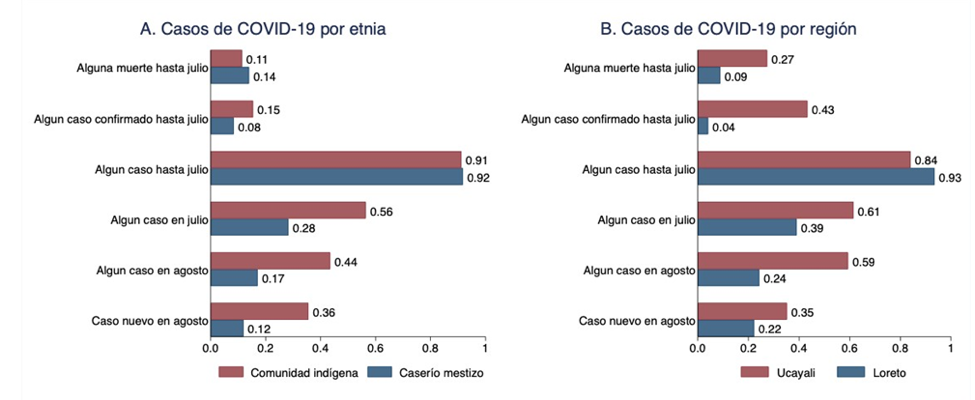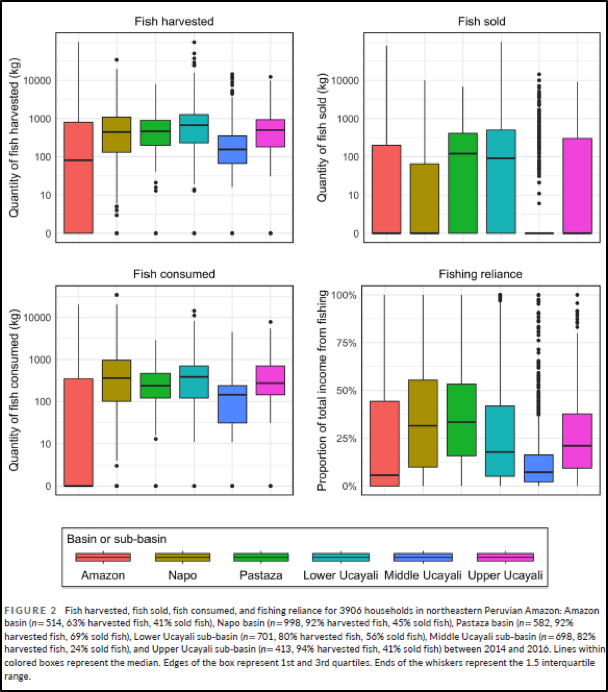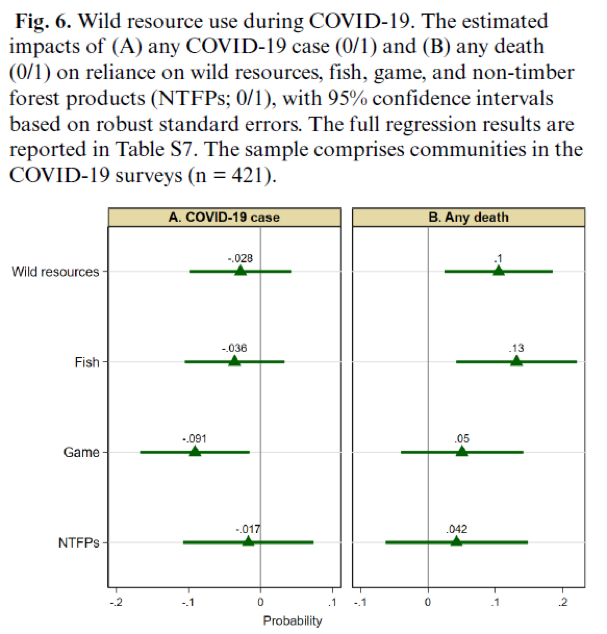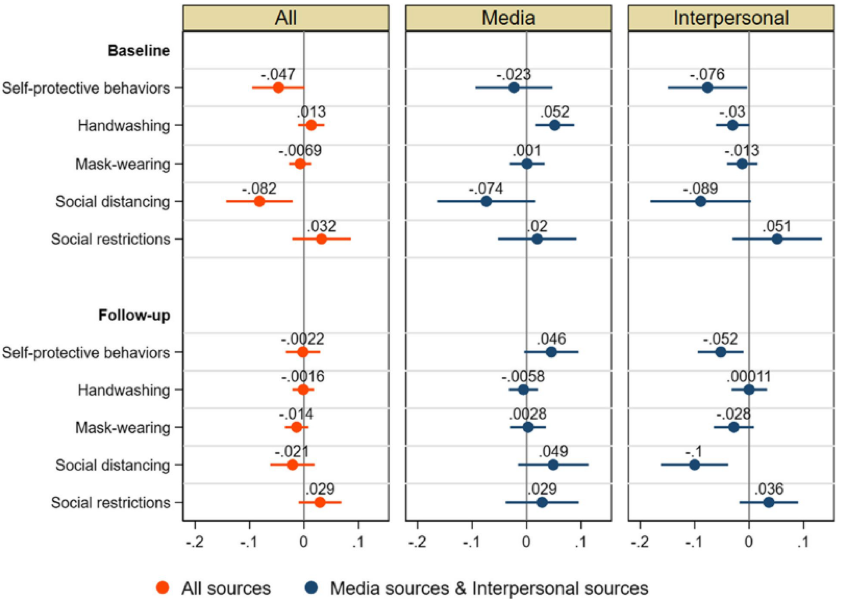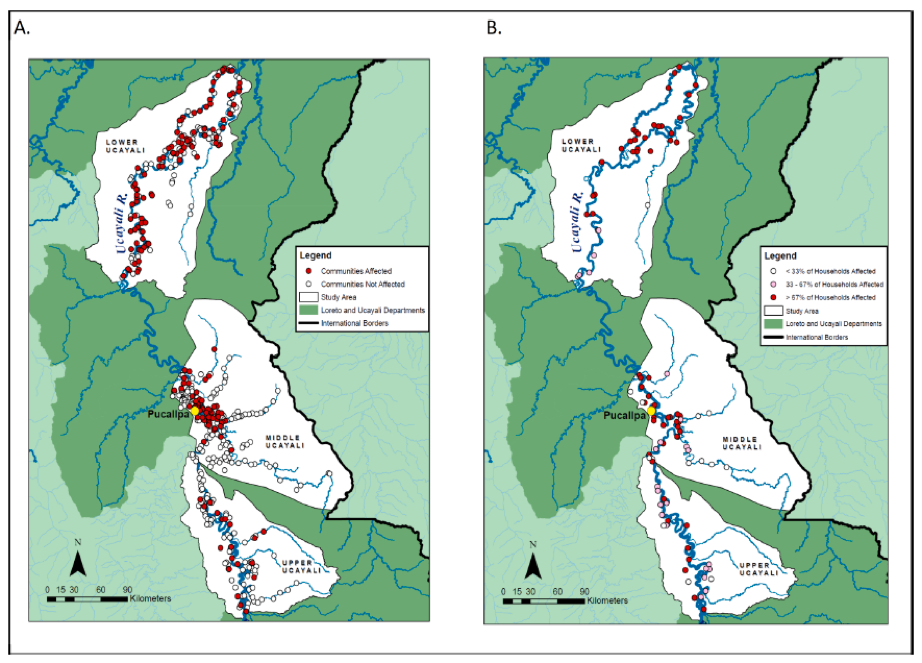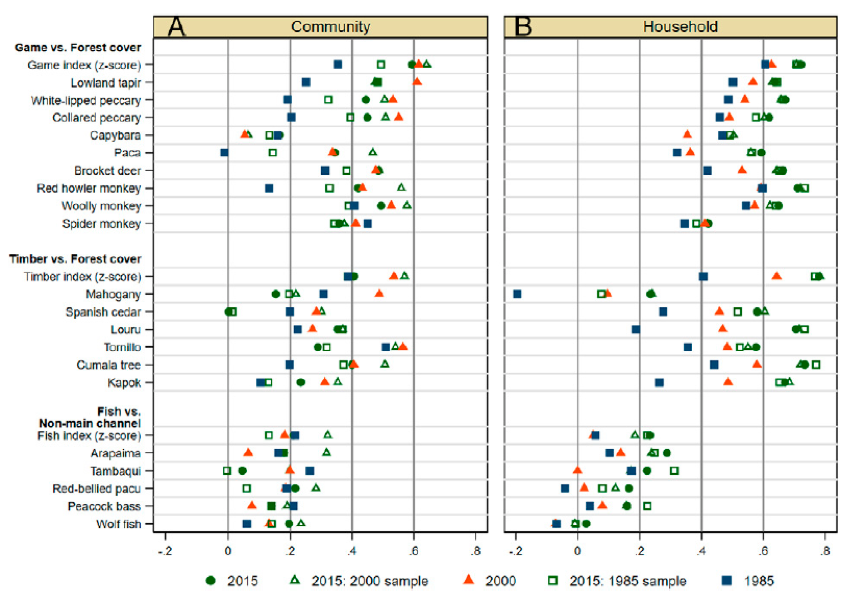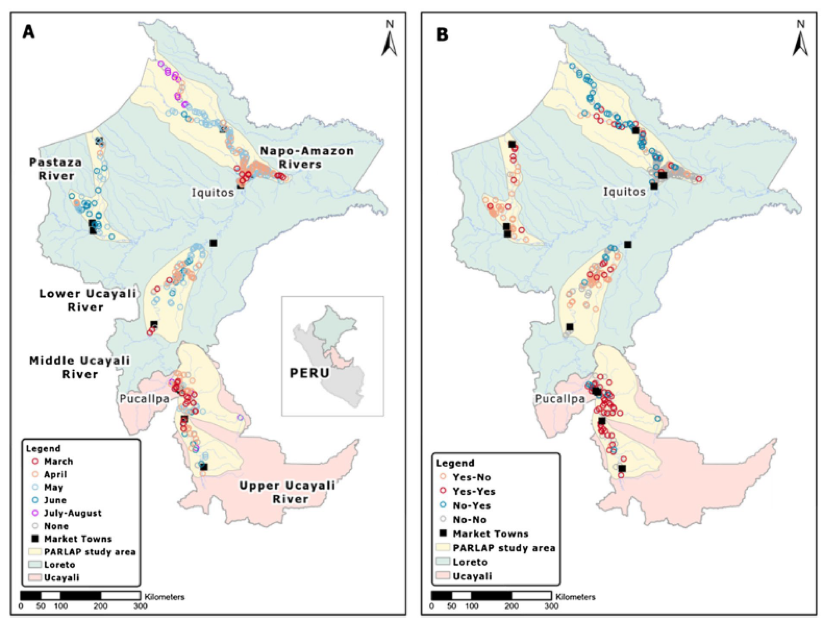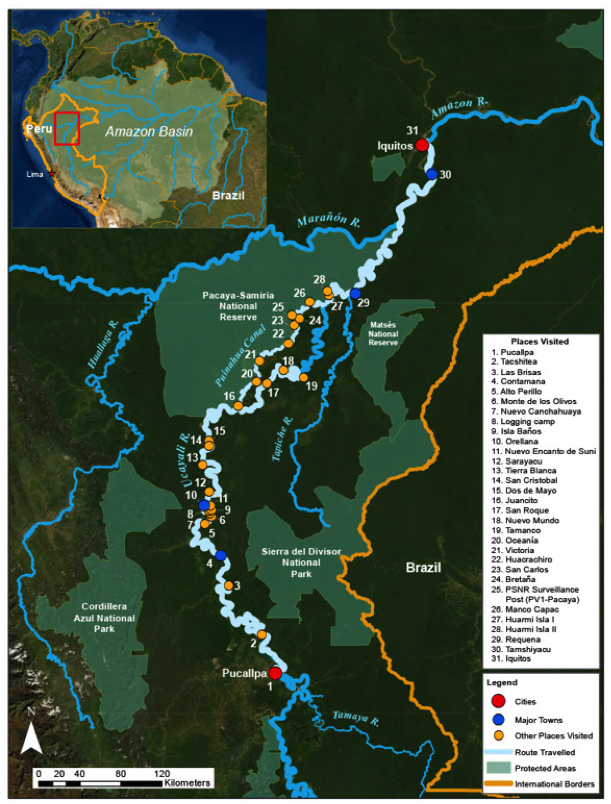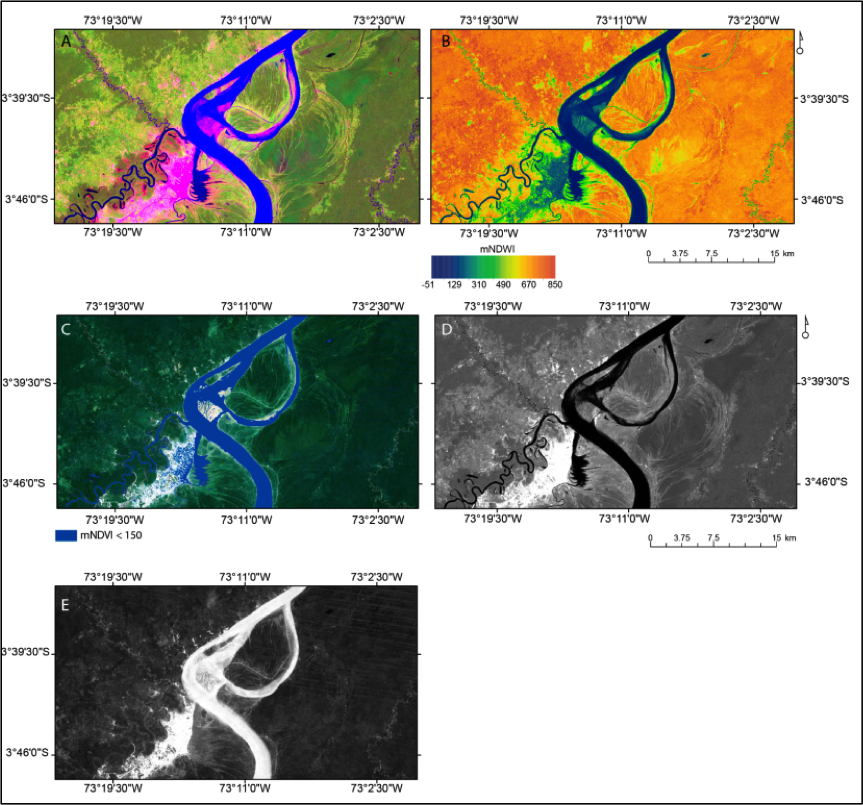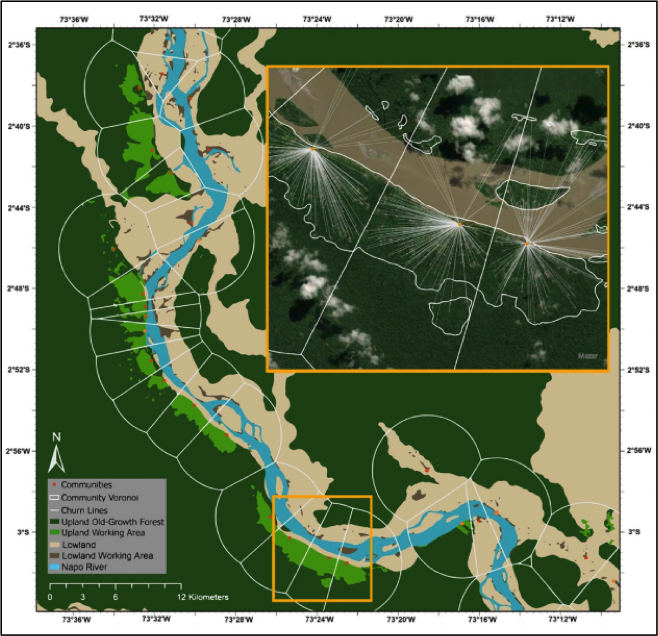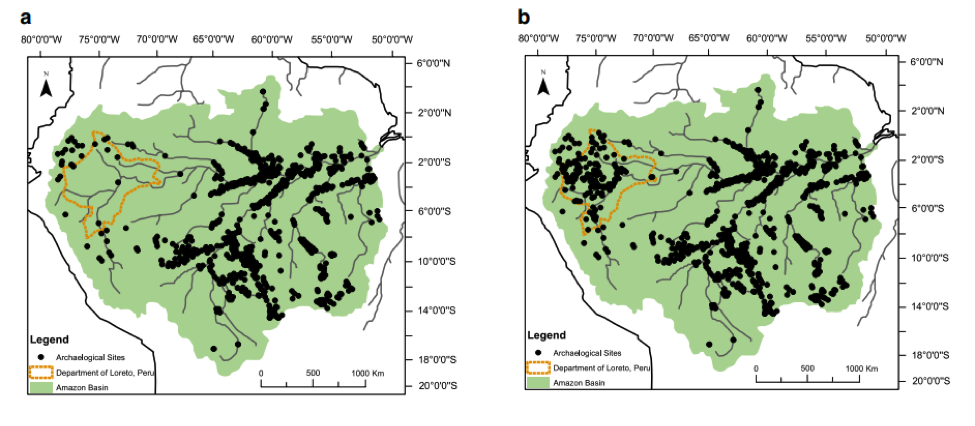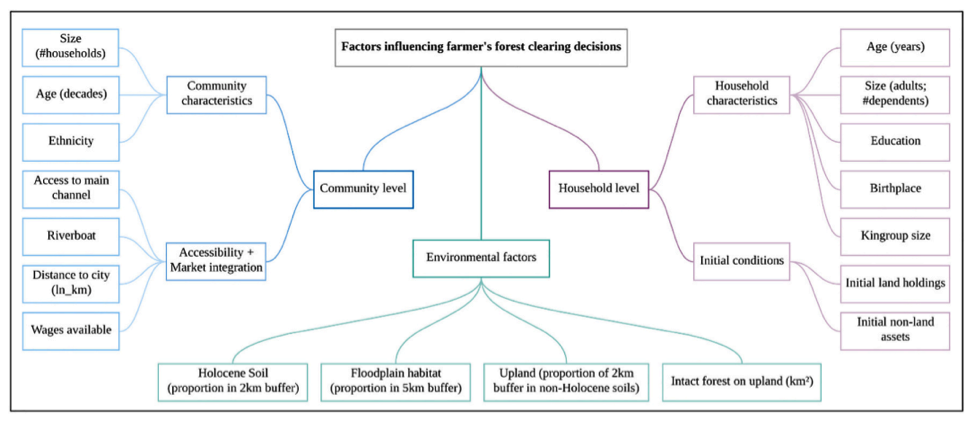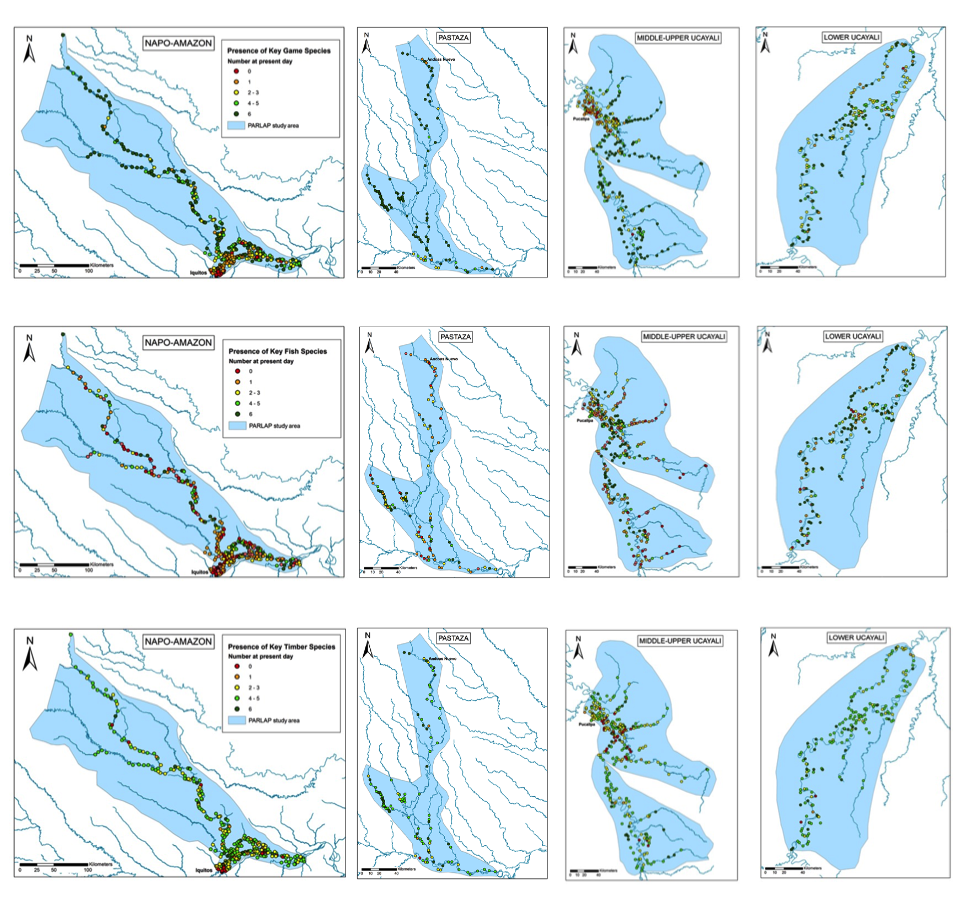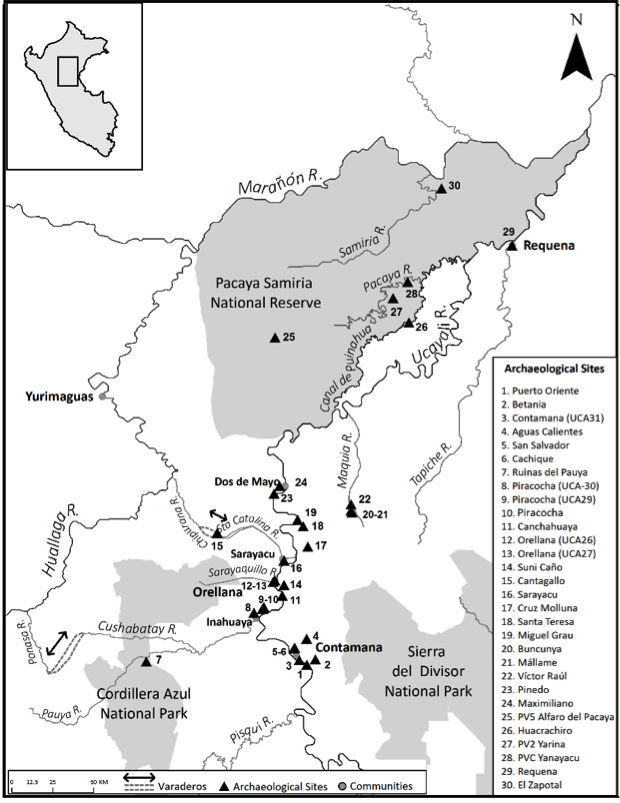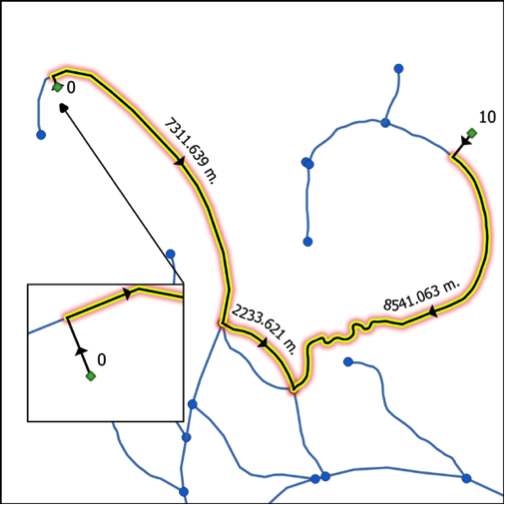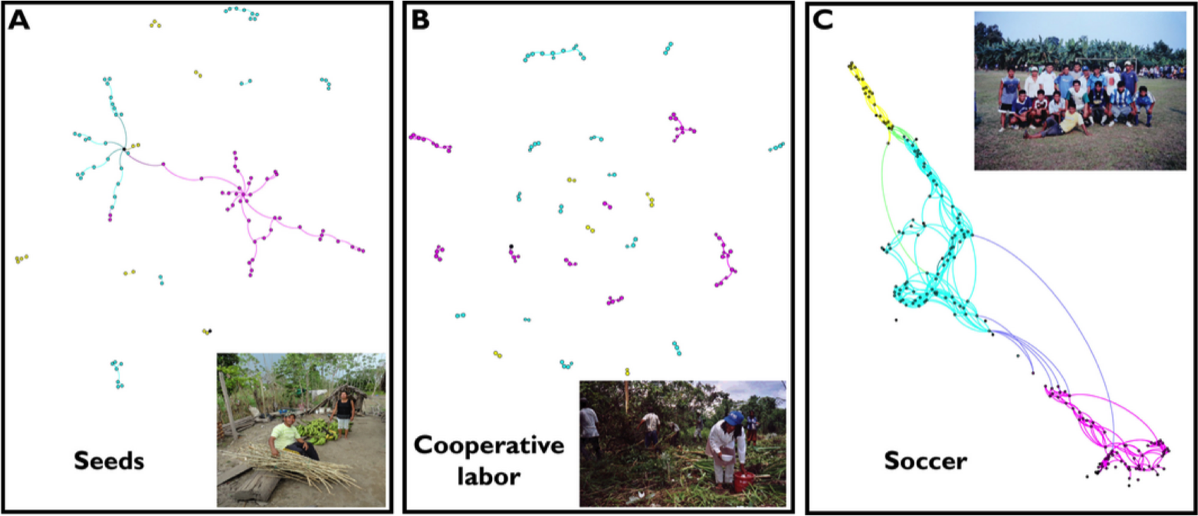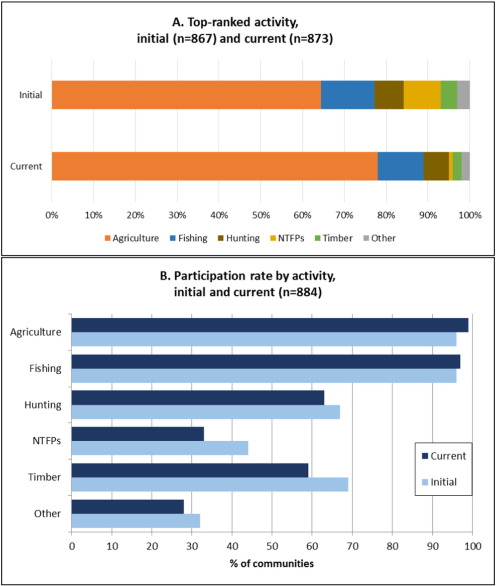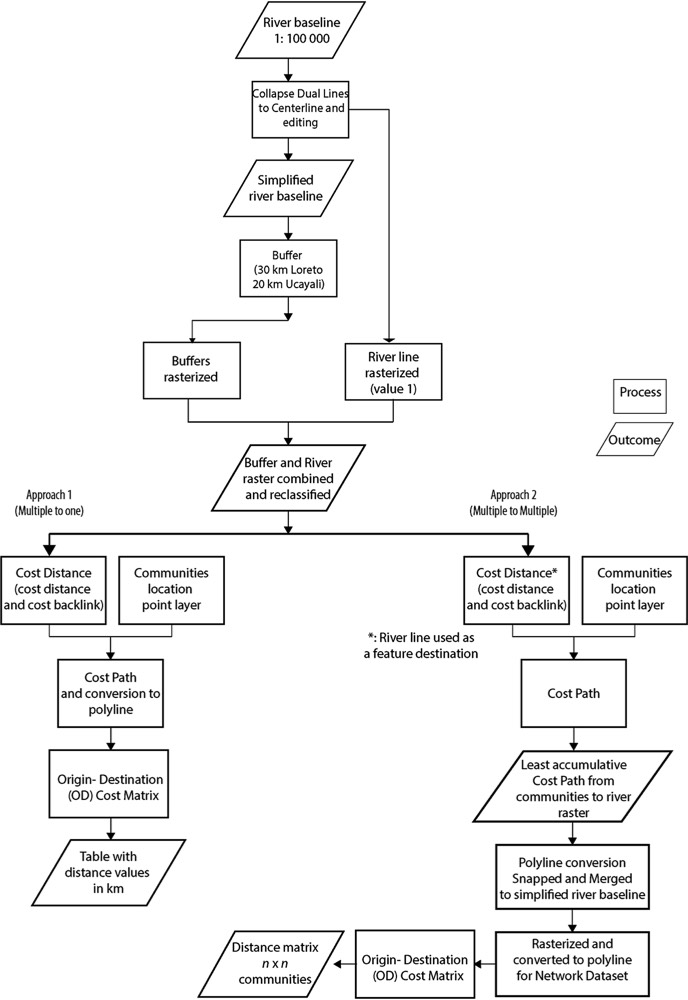Published and Unpublished Works
Articles
Abizaid, C., Y. Takasaki and O.T. Coomes. 2024. “COVID-19 en poblaciones rurales indígenas y no-indígenas amazónicas”, Revista Peruana de Medicina Experimental y Salud Pública (in press)
Takasaki, Y., O.T. Coomes and C. Abizaid. 2024. “Tropical forests provide gendered insurance against illness”, Land Economics 100(2): 314-332.
Poissant, D., O.T. Coomes, B.E. Robinson, Y. Takasaki and C. Abizaid. 2024. “Livelihoods and poverty in small-scale fisheries in western Amazonia”, Fisheries Management and Ecology 31, e12651
Takasaki, Y., O.T. Coomes and C. Abizaid. 2023. “Tropical forest environments provide insurance against COVID-19”, Ecology and Society 28(3): 8
Takasaki, Y., O.T. Coomes and C. Abizaid. 2022. “COVID-19 information and self-protective behaviors among rural communities in tropical forests”, BMC Public Health 22:1394.
Langill, J., C. Abizaid, Y. Takasaki and O.T. Coomes. 2022. “Integrated multi-scalar analysis of vulnerability to environmental hazards: evidence from extreme flooding in western Amazonia” Global Environmental Change 76, 102585.
Takasaki, Y., O.T. Coomes, C. Abizaid and M. Kalacska. 2022. “Landscape-scale concordance between local ecological knowledge for tropical wild species and remote sensing of land cover”, Proceedings of the National Academy of Sciences of the United States of America 119(40): e2116446119.
Coomes, O.T., Y. Takasaki and C. Abizaid. 2022. “Access to floodplain resources spares old-growth forests in Amazonia”, Nature Sustainability 5: 965-972.
Takasaki, Y., Abizaid, C. and O.T. Coomes. 2022. “COVID-19 contagion across remote communities in tropical forests“ Scientific Reports 12, 20727.
Abizaid, C., O.T. Coomes and Y. Takasaki. 2022. “Lifeways and currents of change in the Peruvian Amazon: A 1000 km boat journey down the Ucayali River”, Focus on Geography.
Kalacska, M., J.P. Arroyo-Mora, O.T. Coomes, Y. Takasaki and C. Abizaid. 2022. “Multi-temporal surface water classification for four major rivers from the Peruvian Amazon”, Data 7, 6.
Coomes, O.T., M. Kalacska, Y. Takasaki, C. Abizaid and T. Grupp. 2022. “Smallholder agriculture results in stable forest cover in riverine Amazonia” Environmental Research Letters 17(1): 014024.
Coomes, O.T., S. Rivas Panduro, C. Abizaid and Y. Takasaki. 2021. “Geolocation of unpublished archaeological sites in the Peruvian Amazon” Scientific Data 8, 290.
Coomes, O.T., Y. Cheng, Y. Takasaki and C. Abizaid. 2021. “What drives clearing of old-growth forest over secondary forests in tropical shifting cultivation systems? Evidence from the Peruvian Amazon” Ecological Economics 189, 107170.
Coomes, O.T., Y. Takasaki, and C. Abizaid. 2020. “Impoverishment of local wild resources in western Amazonia: a large-scale community survey of local ecological knowledge” Environmental Research Letters 15(7): ab83ad.
Coomes, O.T., C. Abizaid, Y. Takasaki and Santiago Rivas Panduro. 2020. “The Lower Ucayali river in prehistory: Cultural chronology, archeological evidence and a recently discovered Pre-Columbian site” The Geographical Review 111(1): 145-167.
Cadieux, N., M. Kalacska, O.T. Coomes, M. Tanaka, and Y. Takasaki. 2020. “A Python algorithm for shortest-path river network distance calculations considering river flow direction” Data 5(1), 8.
Abizaid, C., O.T. Coomes, Y. Takasaki, and J. P. Arroyo-Mora. 2018. “Rural social networks along Amazonian rivers: seeds, labor and soccer among rural communities on the Napo River, Peru”, The Geographical Review 108(1): 92-119.
Received the 2018 Best Paper Award, The Geographical Review
Received the 2018 Best Paper Award, The Geographical Review
Coomes, O.T., Y. Takasaki, C. Abizaid and J.P. Arroyo-Mora. 2016. “Environmental and market determinants of economic orientation among rain forest communities: evidence from a large-scale survey in western Amazonia”, Ecological Economics 129: 260-271.
Webster, K., J.P. Arroyo-Mora, O.T. Coomes, Y. Takasaki and C. Abizaid. 2016. “A cost path and network analysis methodology to calculate distances along a complex river network in the Peruvian Amazon”, Applied Geography 73:13-25.
Working Papers, Theses, Reports and Manuscripts
Takasaki, Yoshito, Oliver T. Coomes, and Christian Abizaid. 2024. "Pervasive Indigenous and local knowledge of tropical wild species." (under review)
Tsuda, Shunsuke, Yoshito Takasaki, and Mari Tanaka. 2024. “Human and nature: Economies of density and conservation in the Amazon rainforest.” (draft)
Takasaki, Yoshito, Oliver T. Coomes, and Christian Abizaid. 2024. "Impacts of food assistance under COVID-19 pandemic in poor remote communities." (under review)
Zayonc, D., O.T. Coomes, B.E. Robinson, Y. Takasaki and C. Abizaid. 2024. “What predicts hunting and game harvests in Amazonian forests? Evidence from Peru” (under review)
Ferguson, L. 2024. Social and Environmental Determinants of Health in the Rural Peruvian Amazon. BABSc thesis, McGill University, 58 pp.
Poissant, D. 2021. Overfishing, Fishing Livelihoods and Poverty in the Peruvian Amazon. MSc thesis, McGill University, 153 pp.
Abstract: Amazonia is home to the most biodiverse freshwater fish assemblage in the world and to millions of inhabitants who rely on fishing for securing food and incomes. Starting in the 1960s, however, commercial fishing quickly expanded across the Amazon basin to feed growing populations in urban areas. Increased fishing pressure ultimately led to the depletion of fish stocks in many areas, especially nearby urban centers. In many remote areas, however, our knowledge of the impacts of fish harvest remains limited. Moreover, little is known about the geographical and socio-economic drivers of fishing livelihoods and how declining fish stocks affect the livelihood strategies of rural people. Such knowledge is critically needed to inform effective conservation and development policies.
This study examines the fisheries of the Lower Ucayali River, a remote region of the Peruvian Amazon, which has become the main fish provider for city markets in eastern Peru. In the absence of standard biological data on local fish stocks, we conducted local ecological knowledge (LEK) surveys with 87 fishers in 18 communities to assess the impacts of fishing pressure on fish stocks. We also use data gathered as part of the Peruvian Amazon Rural Livelihoods and Poverty (PARLAP) project from a large-scale household surveys of 3937households in 235 communities to develop quantitative models of participation in fishing, levels of fish harvest and economic reliance on fish resources. Finally, we use household survey data that we gathered from 142 households located in six communities in the Lower Ucayali to assess
household vulnerability to declining fish resources.
Our results show that fish stocks have declined significantly over the last six decades along the Lower Ucayali River. Declines were more severe among species with higher economic value, larger body size, slower reproduction rates, and from higher trophic levels. Results from LEK surveys indicated a “shifting baseline syndrome” among our participants, whereby the new generation of users have lower reference points regarding ecosystem health and are gradually accommodating to species loss. Our LEK surveys also highlighted the importance of the Pacaya Samiria National Reserve for sustaining fisheries in the Lower Ucayali. We found that demographic growth, increasing market connectivity, the introduction of new fishing materials and inadequate property regimes and governance systems are the main drivers of increased fishing pressure. Our quantitative models indicate that distance from cities drives participation in fisheries whereas market connectivity is a limiting factor for harvesting large quantities of fish. Households
that were more asset rich when they settled have significantly higher levels of fish harvest, but lower levels of reliance on fisheries. Finally, we found wealthier households to be less affected by declines in fish resources, whereas poorer households had to quit fishing and rely on agriculture when fish stocks become depleted, increasing their food and economic insecurity.
Our study identifies several priorities and strategies to secure the future of the fisheries and the wellbeing of fishers in the Lower Ucayali. Particular attention is needed on future changes affecting fish demand, market connection and new technologies to understand how, where, and when fish stocks are likely to be overexploited. Interventions should also aim to develop viable long-term economic alternatives for rural people so the opportunity cost of staying in fisheries becomes higher when fish stocks decline. Programs targeting the poorer household are also needed to reduce dependence on fisheries for cash incomes. Finally, support for community-based fishing management is much needed to enable communities to enforce fishing regulations and thereby protect an important source of food and income for all.
Zayonc, D. 2021. Local ecological knowledge, hunting, and game harvesting in the Peruvian Amazon. MSc thesis, McGill University, 132 pp.
Abstract: In many rural regions of Amazonia, hunting, and game meat are important sources of food and cash income but hunters who hold substantial local ecological knowledge (LEK) are often criticized for depleting wildlife. In this thesis, I examine the potential of LEK household surveys for assessing the status of Amazonian wildlife and engaging hunting communities in conservation initiatives. To assess the potential of LEK for reporting wildlife status, I compare data gathered from 37 structured household surveys conducted in a community on the Napo River in northeastern Peru for wildlife presence with data from conventional methods (487 camera trap days and 15 transect surveys). The results of the LEK household surveys are correlated with the conventional surveys and highlight the relevance of LEK for rapid wildlife inventories in Amazonia. I also explore the question of who chooses to be a hunter and the importance of game meat in rural livelihoods. Grounded in the large-scale Peruvian Amazon Rural Livelihoods and Poverty (PARLAP) Project survey of 919 communities and nearly 4000 households, I characterize hunters based on livelihood and community characteristics data. I draw upon a dataset that I collected between June and September 2019 in an Indigenous Kichwa community and a ribereño community along the Napo River (44 semi-structured hunter characterization surveys and 20 oral histories). Descriptive and quantitative analyses point to the importance of game meat for rural subsistence and identify the characteristics that drive hunting participation and harvest. By understanding the drivers of hunting, and who holds LEK about wildlife presence, large-scale surveys can identify where and how best to implement wildlife conservation initiatives in Amazonia.
Takasaki, Y., O.T. Coomes and C. Abizaid. 2021. "COVID-19 among rural peoples in the Peruvian Amazon: Policy brief". Peruvian Amazon Rural Livelihoods and Poverty (PARLAP) Project, University of Tokyo, Japan. DOI: 10.5281/zenodo.4683344
Noritomo, Y. 2021. “Research site selection bias: Evidence from the Peruvian Amazon”, M.A. thesis, University of Tokyo, 88 pp.
Abstract: Out-of-sample predictions may fail if study sites are purposely chosen due to research feasibility; however, evidence on their failure and the mechanism is scarce. This study analyzes the first large-scale detailed surveys in the remote Peruvian Amazon context to test research site selection bias, the extrapolation bias due to endogenous choice of the study site, specifically focusing on the impact of floods as a case-study. Average treatment effects (ATEs) in unresearched communities are predicted based on research-available communities, identified via systematic review, using traditional extrapolation methods. The results reveal the impacts are heterogeneous and significantly adverse for households in such communities. Although adjusting the covariate distribution improves the prediction of ATEs, the preciseness is not consistently accurate, with large standard errors. To reveal the mechanism, studying the selection of researched communities reveals that NGOs presence and logistical characteristics are systematically different across researched and unresearched communities. The results reject the former as a source of the extrapolation bias, but suggest the latter may matter. The results have implications on the external validity improvements given the research feasibility constraints in remote areas.
Langill, J. 2018. "Differential experienced of climate change: Local knowledge and perspectives of severe flooding in the Peruvian Amazon", M.A. thesis, University of Toronto, 153 pp.
Abstract: In the context of rapid climate change, the frequency and magnitude of environmental hazards in Amazonia are continually increasing. This study seeks to understand the lived realities of environmental hazards in the Peruvian Amazon, and in particular flooding, and how experiences are shaped by differential positionalities. The study draws upon data from the Peruvian Amazon Rural Livelihoods and Poverty Project community survey (n=919) and household survey (n=3,941), as well as interview (n=24) and survey (n=25) data collected during fieldwork in Éxito, a riverine village in the Department of Ucayali, Peru. The research findings indicate that flooding experience is highly determined by intersecting lines of difference at the individual, household and village levels; that fishing occupies several related yet contested roles within the village; and that given the positive and negative implications identified of four key flood types, we need to reconsider how we define environmental hazard in the Amazonian context.
Girard, D. A. 2018. “Does the provision of public goods influence biodiversity? A study of Peruvian Amazon communities” B.Sc. Honours thesis, McGill University, 48 pp.
Abstract: This paper explores the relationship between education, healthcare and biodiversity in rural communities of the Peruvian Amazon. We used survey data from the Peruvian Amazon Rural Livelihoods and Poverty (PARLAP) project, a large-scale study of communities in the Ucayali and Loreto regions of Peru. We studied correlations using multiple regression to assess the community-level impacts of healthcare and education on the abundance, yields and quality of game, fish and timber species. Our results indicated that communities with a secondary school had higher expected fish catches, as well as a greater proportion of high quality fish species, while communities with healthcare had lower rates of expected fish catch. There were no statistically significant correlations with timber or game species. An analysis of the Peruvian context shows that it is possible that the correlation is not a function of healthcare being detrimental to fish stocks, but rather that the concentration of institutions in a few communities is putting additional pressure on locally available resources. If that is the case, Peru’s objective of universal healthcare could help alleviate the pressure on fish species. The sensitivity of fish to changes in consumptive behaviours, as well as their historic neglect in conservation initiatives (Castello et al., 2014) warrants them special attention from here on out. As development occurs, with increased provision of healthcare and education in rural areas, we need to know what the associated effects will be, in order to design well-adapted conservation and development policies rather than promote rural development at the expense of nature.
Garber, P.E. 2018. ““Pobretología” of the Periphery: The Spatial Distribution and Determinants of Community Welfare in the Peruvian Amazon”, B.A. Honours Thesis, McGill University, 45 pp.
Abstract: This study incorporates GIS and linear regression modeling techniques in order to elucidate the spatial distribution and determinants of community welfare in the Peruvian Amazon. In total, 906 communities comprise the research sample, while the Amazon, Napo, Pastaza, and Ucayali sub-basins represent the geographical extent of the study. To fully capture the aspects of welfare and poverty in this region, a comprehensive community welfare index served as an indicator of each community’s well-being. Accordingly, this analysis aims to glean results that could inform a geographically targeted poverty alleviation program in the study area. Visual results from the community welfare map and statistical results from the regression model indicate that lower-welfare, indigenous communities predominantly inhabit the more remote Napo and Pastaza sub-basins. From a policy perspective, the regression revealed the importance of market access and participation in determining community welfare, indicating that effective programs could focus on these features. However, consulting with the communities targeted for assistance programs constitutes an essential component of any subsequent strategy, helping to ensure that equitable outcomes flow from their effort.
Bryson, L.C. 2017. “Spatial patterns of natural resource depletion among rain forest communities in the Peruvian Amazon: the role of protected areas and indigenous territories in the conservation of key species”, M.Sc thesis, University of Toronto, 78 pp.
Abstract: Human-induced environmental change is not a new phenomenon in biologically rich areas of western Amazonia. Rain forest communities have long modified their environments, pursuing a diverse portfolio of economic activities for subsistence and income generation. Globally, protected areas (PAs) are the chief conservation strategy. While the effectiveness of different PA models continues to be debated, recent research acknowledges the significance of extractive PAs and indigenous territories to the conservation of biodiversity in human-modified landscapes. Using community census data collected from rain forest communities in the data poor region of the Peruvian Amazon (n=919), spatial clustering and regression analyses are applied to evaluate the effect of proximity to extractive PAs and indigenous territories on relative availability of key species. Controlling for important environmental, market, and community characteristics, our research indicates that extractive PAs and indigenous territories have helped to preserve the availability of key species by certain measures that we isolate in the work.
Shaul, D. and C. Abizaid. 2016. “Soccer, seed, and labour exchange networks in the Napo basin, Peru”, Summary report, University of Toronto, 159 pp.
Sanchez, L. and C. Abizaid. 2016. “Environmental shock exposure in the Peruvian Amazon”, Summary Report, University of Toronto, 39 pp.
Donohue, L. 2015. “Resilience and vulnerability of river-side communities to environmental shocks in Loreto and Ucayali regions, Peruvian Amazon”, B.Sc. Honours thesis, McGill University, 68 pp.
Abstract: Amazonian rivers provide significant opportunities for floodplain agriculture but also bring destructive floods, cause river bank slumps, and force communities to relocate. This thesis aims to assess the resilience and vulnerability of river-side communities to environmental shocks in the Regions of Loreto and Ucayali of eastern Peru. Using data from the Peruvian Amazon Rural Livelihoods and Poverty Project (PARLAP), this study applies multivariate statistical techniques and mapping to identify patterns in community vulnerability among 919 communities along four Amazonian rivers. I find that riverbank slumping is a greater threat to community stability than large floods, and that the most vulnerable communities are those located in the floodplains without complementary access to land in the upland, often relocating to riskier locations. Sub-regional heterogeneity in environmental shocks and community stability is considerable, and initiatives aimed at reducing rural poverty must consider this variation in adapting strategies to the specific locales they target.
Donohue, L., and O.T. Coomes. 2014. “Natural resource availability in the Peruvian Amazon: descriptive analyses”, Summary report, McGill University, 164 pp.
Miller, W.N. 2013. “Historical and geographical patterns of human settlement in the Napo River basin, Peruvian Amazon”, BA & BSc Honours thesis, McGill University, 70 pp.
Abstract: Historical and geographical patterns of human settlement are described using data from a census of all 273 communities in the Napo River basin in the Peruvian Amazon, focusing critically on the determinants of community location. The basin is an underdeveloped and understudied area of highly biodiverse tropical forest with mostly small, resource-poor communities located along the rivers and waterways. Agriculture is the most important economic activity, and has become increasingly more important through time, but it is often not the deciding factor driving settlement decisions. No single dominant motive for settlement can be identified over the history of the basin, and as time progressed, human communities settled for more diverse reasons. A slight trend is noted toward more subsistence-focused activities like agriculture and fishing. In earlier decades, commercial estates were established, and as the riverside became more densely populated, communities “filled in” between extant communities.
Tsuda, Shunsuke, Yoshito Takasaki, and Mari Tanaka. 2024. “Human and nature: Economies of density and conservation in the Amazon rainforest.” (draft)
Takasaki, Yoshito, Oliver T. Coomes, and Christian Abizaid. 2024. "Impacts of food assistance under COVID-19 pandemic in poor remote communities." (under review)
Zayonc, D., O.T. Coomes, B.E. Robinson, Y. Takasaki and C. Abizaid. 2024. “What predicts hunting and game harvests in Amazonian forests? Evidence from Peru” (under review)
Ferguson, L. 2024. Social and Environmental Determinants of Health in the Rural Peruvian Amazon. BABSc thesis, McGill University, 58 pp.
Poissant, D. 2021. Overfishing, Fishing Livelihoods and Poverty in the Peruvian Amazon. MSc thesis, McGill University, 153 pp.
Abstract: Amazonia is home to the most biodiverse freshwater fish assemblage in the world and to millions of inhabitants who rely on fishing for securing food and incomes. Starting in the 1960s, however, commercial fishing quickly expanded across the Amazon basin to feed growing populations in urban areas. Increased fishing pressure ultimately led to the depletion of fish stocks in many areas, especially nearby urban centers. In many remote areas, however, our knowledge of the impacts of fish harvest remains limited. Moreover, little is known about the geographical and socio-economic drivers of fishing livelihoods and how declining fish stocks affect the livelihood strategies of rural people. Such knowledge is critically needed to inform effective conservation and development policies.
This study examines the fisheries of the Lower Ucayali River, a remote region of the Peruvian Amazon, which has become the main fish provider for city markets in eastern Peru. In the absence of standard biological data on local fish stocks, we conducted local ecological knowledge (LEK) surveys with 87 fishers in 18 communities to assess the impacts of fishing pressure on fish stocks. We also use data gathered as part of the Peruvian Amazon Rural Livelihoods and Poverty (PARLAP) project from a large-scale household surveys of 3937households in 235 communities to develop quantitative models of participation in fishing, levels of fish harvest and economic reliance on fish resources. Finally, we use household survey data that we gathered from 142 households located in six communities in the Lower Ucayali to assess
household vulnerability to declining fish resources.
Our results show that fish stocks have declined significantly over the last six decades along the Lower Ucayali River. Declines were more severe among species with higher economic value, larger body size, slower reproduction rates, and from higher trophic levels. Results from LEK surveys indicated a “shifting baseline syndrome” among our participants, whereby the new generation of users have lower reference points regarding ecosystem health and are gradually accommodating to species loss. Our LEK surveys also highlighted the importance of the Pacaya Samiria National Reserve for sustaining fisheries in the Lower Ucayali. We found that demographic growth, increasing market connectivity, the introduction of new fishing materials and inadequate property regimes and governance systems are the main drivers of increased fishing pressure. Our quantitative models indicate that distance from cities drives participation in fisheries whereas market connectivity is a limiting factor for harvesting large quantities of fish. Households
that were more asset rich when they settled have significantly higher levels of fish harvest, but lower levels of reliance on fisheries. Finally, we found wealthier households to be less affected by declines in fish resources, whereas poorer households had to quit fishing and rely on agriculture when fish stocks become depleted, increasing their food and economic insecurity.
Our study identifies several priorities and strategies to secure the future of the fisheries and the wellbeing of fishers in the Lower Ucayali. Particular attention is needed on future changes affecting fish demand, market connection and new technologies to understand how, where, and when fish stocks are likely to be overexploited. Interventions should also aim to develop viable long-term economic alternatives for rural people so the opportunity cost of staying in fisheries becomes higher when fish stocks decline. Programs targeting the poorer household are also needed to reduce dependence on fisheries for cash incomes. Finally, support for community-based fishing management is much needed to enable communities to enforce fishing regulations and thereby protect an important source of food and income for all.
Zayonc, D. 2021. Local ecological knowledge, hunting, and game harvesting in the Peruvian Amazon. MSc thesis, McGill University, 132 pp.
Abstract: In many rural regions of Amazonia, hunting, and game meat are important sources of food and cash income but hunters who hold substantial local ecological knowledge (LEK) are often criticized for depleting wildlife. In this thesis, I examine the potential of LEK household surveys for assessing the status of Amazonian wildlife and engaging hunting communities in conservation initiatives. To assess the potential of LEK for reporting wildlife status, I compare data gathered from 37 structured household surveys conducted in a community on the Napo River in northeastern Peru for wildlife presence with data from conventional methods (487 camera trap days and 15 transect surveys). The results of the LEK household surveys are correlated with the conventional surveys and highlight the relevance of LEK for rapid wildlife inventories in Amazonia. I also explore the question of who chooses to be a hunter and the importance of game meat in rural livelihoods. Grounded in the large-scale Peruvian Amazon Rural Livelihoods and Poverty (PARLAP) Project survey of 919 communities and nearly 4000 households, I characterize hunters based on livelihood and community characteristics data. I draw upon a dataset that I collected between June and September 2019 in an Indigenous Kichwa community and a ribereño community along the Napo River (44 semi-structured hunter characterization surveys and 20 oral histories). Descriptive and quantitative analyses point to the importance of game meat for rural subsistence and identify the characteristics that drive hunting participation and harvest. By understanding the drivers of hunting, and who holds LEK about wildlife presence, large-scale surveys can identify where and how best to implement wildlife conservation initiatives in Amazonia.
Takasaki, Y., O.T. Coomes and C. Abizaid. 2021. "COVID-19 among rural peoples in the Peruvian Amazon: Policy brief". Peruvian Amazon Rural Livelihoods and Poverty (PARLAP) Project, University of Tokyo, Japan. DOI: 10.5281/zenodo.4683344
Noritomo, Y. 2021. “Research site selection bias: Evidence from the Peruvian Amazon”, M.A. thesis, University of Tokyo, 88 pp.
Abstract: Out-of-sample predictions may fail if study sites are purposely chosen due to research feasibility; however, evidence on their failure and the mechanism is scarce. This study analyzes the first large-scale detailed surveys in the remote Peruvian Amazon context to test research site selection bias, the extrapolation bias due to endogenous choice of the study site, specifically focusing on the impact of floods as a case-study. Average treatment effects (ATEs) in unresearched communities are predicted based on research-available communities, identified via systematic review, using traditional extrapolation methods. The results reveal the impacts are heterogeneous and significantly adverse for households in such communities. Although adjusting the covariate distribution improves the prediction of ATEs, the preciseness is not consistently accurate, with large standard errors. To reveal the mechanism, studying the selection of researched communities reveals that NGOs presence and logistical characteristics are systematically different across researched and unresearched communities. The results reject the former as a source of the extrapolation bias, but suggest the latter may matter. The results have implications on the external validity improvements given the research feasibility constraints in remote areas.
Langill, J. 2018. "Differential experienced of climate change: Local knowledge and perspectives of severe flooding in the Peruvian Amazon", M.A. thesis, University of Toronto, 153 pp.
Abstract: In the context of rapid climate change, the frequency and magnitude of environmental hazards in Amazonia are continually increasing. This study seeks to understand the lived realities of environmental hazards in the Peruvian Amazon, and in particular flooding, and how experiences are shaped by differential positionalities. The study draws upon data from the Peruvian Amazon Rural Livelihoods and Poverty Project community survey (n=919) and household survey (n=3,941), as well as interview (n=24) and survey (n=25) data collected during fieldwork in Éxito, a riverine village in the Department of Ucayali, Peru. The research findings indicate that flooding experience is highly determined by intersecting lines of difference at the individual, household and village levels; that fishing occupies several related yet contested roles within the village; and that given the positive and negative implications identified of four key flood types, we need to reconsider how we define environmental hazard in the Amazonian context.
Girard, D. A. 2018. “Does the provision of public goods influence biodiversity? A study of Peruvian Amazon communities” B.Sc. Honours thesis, McGill University, 48 pp.
Abstract: This paper explores the relationship between education, healthcare and biodiversity in rural communities of the Peruvian Amazon. We used survey data from the Peruvian Amazon Rural Livelihoods and Poverty (PARLAP) project, a large-scale study of communities in the Ucayali and Loreto regions of Peru. We studied correlations using multiple regression to assess the community-level impacts of healthcare and education on the abundance, yields and quality of game, fish and timber species. Our results indicated that communities with a secondary school had higher expected fish catches, as well as a greater proportion of high quality fish species, while communities with healthcare had lower rates of expected fish catch. There were no statistically significant correlations with timber or game species. An analysis of the Peruvian context shows that it is possible that the correlation is not a function of healthcare being detrimental to fish stocks, but rather that the concentration of institutions in a few communities is putting additional pressure on locally available resources. If that is the case, Peru’s objective of universal healthcare could help alleviate the pressure on fish species. The sensitivity of fish to changes in consumptive behaviours, as well as their historic neglect in conservation initiatives (Castello et al., 2014) warrants them special attention from here on out. As development occurs, with increased provision of healthcare and education in rural areas, we need to know what the associated effects will be, in order to design well-adapted conservation and development policies rather than promote rural development at the expense of nature.
Garber, P.E. 2018. ““Pobretología” of the Periphery: The Spatial Distribution and Determinants of Community Welfare in the Peruvian Amazon”, B.A. Honours Thesis, McGill University, 45 pp.
Abstract: This study incorporates GIS and linear regression modeling techniques in order to elucidate the spatial distribution and determinants of community welfare in the Peruvian Amazon. In total, 906 communities comprise the research sample, while the Amazon, Napo, Pastaza, and Ucayali sub-basins represent the geographical extent of the study. To fully capture the aspects of welfare and poverty in this region, a comprehensive community welfare index served as an indicator of each community’s well-being. Accordingly, this analysis aims to glean results that could inform a geographically targeted poverty alleviation program in the study area. Visual results from the community welfare map and statistical results from the regression model indicate that lower-welfare, indigenous communities predominantly inhabit the more remote Napo and Pastaza sub-basins. From a policy perspective, the regression revealed the importance of market access and participation in determining community welfare, indicating that effective programs could focus on these features. However, consulting with the communities targeted for assistance programs constitutes an essential component of any subsequent strategy, helping to ensure that equitable outcomes flow from their effort.
Bryson, L.C. 2017. “Spatial patterns of natural resource depletion among rain forest communities in the Peruvian Amazon: the role of protected areas and indigenous territories in the conservation of key species”, M.Sc thesis, University of Toronto, 78 pp.
Abstract: Human-induced environmental change is not a new phenomenon in biologically rich areas of western Amazonia. Rain forest communities have long modified their environments, pursuing a diverse portfolio of economic activities for subsistence and income generation. Globally, protected areas (PAs) are the chief conservation strategy. While the effectiveness of different PA models continues to be debated, recent research acknowledges the significance of extractive PAs and indigenous territories to the conservation of biodiversity in human-modified landscapes. Using community census data collected from rain forest communities in the data poor region of the Peruvian Amazon (n=919), spatial clustering and regression analyses are applied to evaluate the effect of proximity to extractive PAs and indigenous territories on relative availability of key species. Controlling for important environmental, market, and community characteristics, our research indicates that extractive PAs and indigenous territories have helped to preserve the availability of key species by certain measures that we isolate in the work.
Shaul, D. and C. Abizaid. 2016. “Soccer, seed, and labour exchange networks in the Napo basin, Peru”, Summary report, University of Toronto, 159 pp.
Sanchez, L. and C. Abizaid. 2016. “Environmental shock exposure in the Peruvian Amazon”, Summary Report, University of Toronto, 39 pp.
Donohue, L. 2015. “Resilience and vulnerability of river-side communities to environmental shocks in Loreto and Ucayali regions, Peruvian Amazon”, B.Sc. Honours thesis, McGill University, 68 pp.
Abstract: Amazonian rivers provide significant opportunities for floodplain agriculture but also bring destructive floods, cause river bank slumps, and force communities to relocate. This thesis aims to assess the resilience and vulnerability of river-side communities to environmental shocks in the Regions of Loreto and Ucayali of eastern Peru. Using data from the Peruvian Amazon Rural Livelihoods and Poverty Project (PARLAP), this study applies multivariate statistical techniques and mapping to identify patterns in community vulnerability among 919 communities along four Amazonian rivers. I find that riverbank slumping is a greater threat to community stability than large floods, and that the most vulnerable communities are those located in the floodplains without complementary access to land in the upland, often relocating to riskier locations. Sub-regional heterogeneity in environmental shocks and community stability is considerable, and initiatives aimed at reducing rural poverty must consider this variation in adapting strategies to the specific locales they target.
Donohue, L., and O.T. Coomes. 2014. “Natural resource availability in the Peruvian Amazon: descriptive analyses”, Summary report, McGill University, 164 pp.
Miller, W.N. 2013. “Historical and geographical patterns of human settlement in the Napo River basin, Peruvian Amazon”, BA & BSc Honours thesis, McGill University, 70 pp.
Abstract: Historical and geographical patterns of human settlement are described using data from a census of all 273 communities in the Napo River basin in the Peruvian Amazon, focusing critically on the determinants of community location. The basin is an underdeveloped and understudied area of highly biodiverse tropical forest with mostly small, resource-poor communities located along the rivers and waterways. Agriculture is the most important economic activity, and has become increasingly more important through time, but it is often not the deciding factor driving settlement decisions. No single dominant motive for settlement can be identified over the history of the basin, and as time progressed, human communities settled for more diverse reasons. A slight trend is noted toward more subsistence-focused activities like agriculture and fishing. In earlier decades, commercial estates were established, and as the riverside became more densely populated, communities “filled in” between extant communities.
Conference Presentations
Coomes, O.T., Y. Takasaki and C. Abizaid. 2024. “Rural livelihoods and poverty in the Peruvian Amazon”. Paper presented at the Conference of Latin Americanist Geographers, May 22, San Juan, Puerto Rico, USA
Abizaid, C., O.T. Coomes and C. Abizaid. 2024. “River dynamics and riverine settlement in the Peruvian Amazon”. Paper presented at the Conference of Latin Americanist Geographers, May 22, San Juan, Puerto Rico, USA.
Abizaid, C., Y. Takasaki and O.T. Coomes. 2023. “Regional seed circulation networks in the Peruvian Amazon: inter-community flows of staple and cash crop seed among indigenous and folk communities”. Paper presented January 4 to the Conference of Latin American Geographers, Tucson, Arizona.
Abizaid, C. 2023. “Rural livelihoods persistence and change in the dynamic floodplains of the Peruvian Amazon: Lessons and promising areas for future research”. Presented October 28 to the Canadian Association of Geographers-Ontario Chapter, Toronto, Canada.
Tanaka, Mari, Yoshito Takasaki, and Shunsuke Tsuda. 2023. “Market access and sustainable shifting cultivation in the Amazon rainforest.” Presented to: Hitotsubashi Summer Institute, Hitotsubashi University (06/10); and Kyoto Summer Workshop on Applied Economics, Doshisha University (07/09)
Tsuda, Shunsuke, Y. Takasaki, and M. Tanaka. 2022; 2023. “Human and nature: Economies of density and conservation in the Amazon rainforest.” Presented to: CREPE Day, University of Tokyo (12/26); Middle Eastern Universities Development Conference (MEUDC), NYU Abu Dhabi (11/08); European Meeting of the Urban Economics Association, Bocconi University (05/06); LSE Environment Day, London School of Economics and Political Science (05/02); Occasional Workshop in Environmental and Resource Economics, University of California, Santa Barbara (04/21); JADE-CEPR-Time Development Economics Conference, University of Tokyo (04/02); Young Urban Economist Workshop: World Bank, World Bank (01/31); Y-RISE Conference: Y-RISE, ROK Hotel Kingston (2022/12/16); and, GSE-OSIPP-ISER Joint Conference: Osaka University (2022/09/20), Online, Invited
Cadieux, Nicolas. 2023. "Fixing a directional network in QGIS3", QGIS Open Day conference, February 24th. See this link for the model on GitHub and this link for the presentation on YouTube.
Abizaid, C., O.T. Coomes and Y. Takasaki. 2023. "Regional seed circulation networks in the Peruvian Amazon: inter-community flows of staple and cash crop seed among indigenous and folk communities". Paper presented January 3-7 to the Conference of Latin American Geographers, Tucson, AZ.
Noritomo, Y. 2021. “Constrained data and external validity: Evidence from the Peruvian Amazon”. Paper presented on November 7 at The 16th Applied Econometrics Conference, Online, Japan.
Noritomo, Y. 2021. “Research Site Selection Bias: Evidence from the Peruvian Amazon”. Paper presented on May 15 at Japanese Economic Association (JEA) 2021 Spring Meeting, Online, Japan.
Noritomo, Y. 2021. “Research Site Selection Bias: Evidence from the Peruvian Amazon”. Paper presented on March 24 at Sophia 4th Economics Conference, Online, Japan.
Abizaid, C. 2021. Livelihoods and poverty in the Peruvian Amazon in time of COVID-19. Inaugural LiveCLAG session “Reassessing Vulnerability and Solidarity in Latin America and the Caribbean during the COVID-19 Pandemic. February 4, (online) (Invited panelist)
Abizaid, C., O.T. Coomes and Y. Takasaki. 2020. El proyecto sobre pobreza y formas de vida rural en la Amazonía Peruana (PARLAP): un estudio de gran escala de comunidades de la selva baja. First International Congress on the Geography of Apurimac and Southern Peru. August 29-30. (online) (Invited speaker – In Spanish)
Noritomo, Y. 2020. “Predicting the efficacy of treatment effects of non-researched communities from research sample: Community selection bias in Peruvian Amazon”. Paper presented on November 15 at Young JADE Conference, Online, Japan.
Abizaid, C., O.T. Coomes and Y. Takasaki. 2020. “A one-thousand-kilometer boat journey through the heart of the Peruvian Amazon: livelihoods and the rhythms of change along the Ucayali River”. Paper presented January 2-4 to the Conference of Latin American Geographers, Antigua, Guatemala.
Abstract: News reports from the Brazilian Amazon raise alarm about the fate of the Amazon and its peoples. Forests have been cut down or degraded at alarming rates from colonization schemes, cattle ranching, roads, and agribusiness development over the last 4 decades, and dams have begun to alter the Amazon river, threatening biodiversity, the livelihoods of indigenous and folk peoples, and the world’s climate. Yet, one third of the Amazon is found in neighboring countries, mainly to the west, where several formative tributaries like the Ucayali, Marañón, and Napo rivers, descend down from the Andes into the Amazon lowlands, bringing the waters that regulate flooding, carry sediments, and enable complex fish migrations. Western Amazonia is not isolated from the general forces that shape what is happening in Brazil, but the local reality is distinct, and yet receives little media coverage. In this paper we report on insights from a recent 1000 km boat journey along the Ucayali River, conducted as part of the Peruvian Amazon rural Livelihoods and Poverty Project (PARLAP). Having worked in the region for 2-3 decades and following on the footsteps of 19th century explorers, we travelled from Pucallpa to Iquitos in 12 days, stopping at some 30 communities to gain perspective on how the region has changed over time. Specifically, we share our impressions on: 1) river transportation and mobility; 2) road development; 3) flooding and environmental change; and 4) the advent of small Chinese motors, cell phones, and mobile money and how they may be shaping riverine livelihoods. The implications for conservation, development and environmental change adaptation are considered
Coffman, D. and C. Abizaid. 2020. “Urban livelihoods, flood vulnerability and preventive resettlement in Iquitos, Peru”. Paper presented January 2-4 to the Conference of Latin American Geographers, Antigua, Guatemala.
Abstract: Preventive resettlement projects are increasingly being implemented to move people out of environmentally risky areas before disaster strikes; in some areas, resettlement may be the only feasible option to cope with the effects of climate change. However, many resettlement projects have failed to deliver on promises, leaving vulnerable populations isolated and impoverished. Further discussion is needed to guide future projects, grounded in the perspectives of those directly affected. In the city of Iquitos, the Peruvian national government is working to relocate 16,000 residents from a flood-prone area called Bajo Belen, a low-income, largely informal neighborhood on the Amazon floodplain. Relocated families receive a small prefabricated house in “Nuevo Belen,” located 13 km outside of Iquitos. Since 2015, 400 households have relocated; further construction is anticipated in the coming year. This research investigates how resettlement has affected residents’ livelihood activities and incomes, using 60 household surveys conducted in Bajo Belen and Nuevo Belen. Findings suggest that while relocation has reduced exposure to floods, it has also left many households economically isolated. This points to the important role that livelihood security plays in a successful resettlement.
Coomes, O. T., M. Kalascka, Y. Takasaki, C. Abizaid and T. Grupp. 2020. “Old-growth forest disturbance and secondary forest dynamics around riverine communities in western Amazonia”. Paper presented January 2-4 to the Conference of Latin American Geographers, Antigua, Guatemala.
Abstract: In much of rural Amazonia where roads have yet to penetrate, old-growth forest disturbance is limited to a narrow band of land along the basin’s major rivers and tributaries where indigenous and ribereño peoples live in riverine communities and practice shifting cultivation and forest extraction. Comprised primarily of secondary forest fallows and agricultural fields, this zone is clearly evident on satellite imagery in Google Earth and provides local people with food, game, timber, building material, and medicinal plants as well as an array of important ecosystem services. In this paper we assess the extent of this secondary forest zone and the drivers of old-growth forest disturbance due to shifting cultivation in the Peruvian Amazon with high spatial resolution satellite imagery and community-level data from the Peruvian Amazon Rural Livelihoods and Poverty Project (PARLAP). Using the Esri World Imagery basemap, we define the area of ‘working forest’ around each of the 906 PARLAP study communities situated along the Amazon, Napo, Pastaza and Ucayali rivers, based on the spatial distribution of forest patches and the visible boundary between intact and disturbed (secondary) forests. We then determine the area within the working forest that is intact, disturbed, and non-forest from a Landsat satellite image classification from CLASlite. Statistical analyses relate the extension from river’s edge, area and patch distribution of the non-intact forest area to community age, size, economic orientation and other characteristics. Our findings identify the factors that predict the extent of old-growth forest disturbance and the dynamics of secondary forests around indigenous and folk communities. The implications for rates of deforestation, forest recovery and carbon sequestration are discussed.
Poissant, D. and O. T. Coomes. 2020. “Regulating access to floodplain lakes in the Peruvian Amazon”. Paper presented January 2-4 to the Conference of Latin American Geographers, Antigua, Guatemala.
Abstract: Fish provide food and economic security for most floodplain peasants in the Amazon basin. The rapid adoption of more efficient fishing technologies in recent decades combined with increased market connectivity have sharply increased fishing pressure throughout the basin. In response to fish depletion in local lakes and increased fishing activities coming from outsiders, many communities have designed and now enforce fishing regulations. In comparison to the Brazilian Amazon, few studies have yet examined how increased fishing pressure has affected fish populations and how communities have responded in western Amazonia. Our field team has visited more than 19 communities situated along the highly productive Ucayali River, in the region of Loreto. Semi-structured interviews were conducted with local authorities and with more than 210 fishermen to reconstitute fish trend over the past years using local ecological knowledge and discuss local perceptions on different managerial strategies. Results indicate that many commercial fish species have suffered considerable declines. Discussions with fishermen and local authorities suggest that unregulated or poorly regulated access to lakes provide the conditions for highly extractive and often destructive harvesting behaviours by outsiders, local elites, or community members. Despite genuine concerns, communities and individuals must overcome numerous challenges to regulate fishing activities so as to effectively manage their local fisheries. Limited governmental support, widespread corruption, lack of accountability, high dependence on fish resources, and elevated transaction costs between local and governmental authorities remained key problems in most communities. Implications of our findings for fishery management initiatives in the region are discussed.
Zayonc, D. and O. T. Coomes. 2020. “Got Game? A characterization of hunters in the Peruvian Amazon”. Paper presented January 2-4 to the Conference of Latin American Geographers, Antigua, Guatemala.
Abstract: In parts of Amazonia, hunting and game meat play an undervalued role in Amazonian identity, food security and income. Hunters are also criticized and penalized for depleting wildlife and creating “empty forests”. Indeed, uncontrolled hunting is often blamed for wildlife population declines but the factors shaping hunter livelihoods is poorly understood. In this talk, I present a model to characterize hunters in the Peruvian Amazon based on livelihood and community characteristics data collected during the PARLAP survey (Peruvian Amazon Rural Livelihoods and Poverty Project) of 919 communities spread across four major river basins in the Peruvian Amazon. The double hurdle model allows for the modeled hunting income to be broken down into two dimensions: the participation of a household in hunting (probit model) and the quantity of household hunting income (lognormal model). I also draw upon a rich set of data collected in an indigenous Kichwa community and a campesino community along the Napo river – communities previously identified as hunting communities using PARLAP data. A total of 44 hunter characterization surveys were conducted to better understand how household and community characteristics influence hunter offtake. Recent research suggests that age and education influence the amount that campesinos hunt in Amazonia however the double hurdle model used suggests that other individual factors and community factors may have a stronger influence on terrestrial wildlife income. Implications of our findings are discussed for wildlife conservation and we highlight conservation opportunities in the rapidly changing game meat market along the Napo River. We suggest that with careful targeting, hunters and hunting communities can be empowered to conserve valuable wildlife resources from outsiders.
Langill, J. C. Abizaid, O.T. Coomes and Y. Takasaki. 2019. Exposure, impacts and coping with flood events in western Amazonia: Lessons from the 2011 flood along the Ucayali River, Peru. Paper presented on October 18 at the 2019 Sustainability: Transdisciplinary Theory, Practice, and Action (STTPA) Meeting, Mississauga, Ontario, Canada.
Abstract: The Amazon basin is experiencing increasing extremes in the annual flood cycle, caused by global and regional environmental change. Research to date has documented the devastating effects of floods and droughts on households, and their responses and coping strategies. Most studies, however, focus on a small number of communities, often located close to each other, providing limited insight on how flooding is experienced in different parts of the basin. This paper examines differential exposure, coping and responses with the 2011 flood—the largest flood in two decades—along the Ucayali River. We draw upon regression analyses of large-scale community and household survey data from the Peruvian Amazon Rural Livelihoods and Poverty Project (PARLAP) (n=1813 households across 110 communities) to examine the role of community and household level factors in shaping exposure, impacts and coping with the 2011 flood. We identify the most common household impacts of and responses to flooding across the Ucayali River Basin, and how greatly these experiences vary between households. Extrapolating these findings within the broader Amazonian context, we discuss multi-scalar inequalities in flood exposure and access to coping mechanisms.
Tanaka, M., Y. Takasaki, O.T. Coomes, and C. Abizaid 2019. “Human and Nature: The Impacts of Community Settlements on Environmental Resource in Amazon”. Paper presented on July 13 at the Kyoto Summer Workshop on Applied Economics, Kyoto University, Japan.
Coomes, O.T., Y. Takasaki, C. Abizaid and C. Rengifo Upiachihua. 2019. “Pre-Columbian archeological complex discovered on the Lower Ucayali River, Peru”. Paper presented on April 5th to the American Association of Geographers, Washington, DC.
Abstract: In contrast to Brazil where research points increasingly to the transformative influence of indigenous peoples in pre-history on Amazonian landscapes, published archaeological evidence from the Peruvian Amazon is sufficiently scarce so as to perpetuate the long-standing debate over the impact of pre-historical populations on the environment in western Amazonia. Once a major focal point for archeological research in Amazonia, the Ucayali river of Peru has received little attention since the early 1980s. In this paper we report on the discovery of a pre-Columbian complex on the Lower Ucayali river. Situated on a river terrace at the narrowest point in the Ucayali river valley, the settlement had access to both floodplain and terra firme environments as well as to rock for stone axes, clay for pottery, salt for use as a condiment and possibly fish preservation, and geothermal river waters for therapeutic/ ceremonial uses. We argue that the site characteristics are exceptional and, combined with information from ethnohistorical sources, surmise that the site may have been the seat of a late pre-historic Cocama chiefdom. We situate the discovery in the context of extant archeological reports from the broader Region of Loreto, and in doing so, demonstrate that far more archaeological sites exist than suggested by the literature. Our discovery points to the need for a fuller archaeological exploration of the site and surrounding area, and suggests that studies aiming to resolve the debate over environmental influence of humans in pre-history in Peru may not be looking in the right places.
Langill, J., C. Abizaid, O.T. Coomes, and Y. Takasaki. 2019. “Exposure, impacts and coping with large flood events in western Amazonia: Lessons from the Ucayali River, Peru”. Paper presented on April 4th to the American Association of Geographers, Washington, DC.
Abstract: The Amazon basin is experiencing increasing extremes in the annual flood cycle, caused by global and regional environmental change. Research to date has documented the devastating effects of floods and droughts on households and individuals, and their responses and coping strategies. Most studies, however, focus on a small number of communities, often located close to each other, providing limited insight on how flooding is experienced in different parts of the basin. This paper examines differential exposure, coping and responses with the 2011 flood—the largest flood on record in over 20 years—along the Ucayali River, in Peru. We draw upon regression analyses of large-scale community and household survey data from the Peruvian Amazon Rural Livelihoods and Poverty Project (PARLAP) (n=1813 households across 110 communities) to examine the role of community and household level factors in shaping exposure, impacts and coping with the 2011 flood. We compare the results from the 2011 flood with in-depth qualitative data collected in two communities on the relative severity of different flood impacts. From our analyses, we identify the most common household impacts of and responses to flooding across the Ucayali River Basin, and yet how greatly these experiences vary between households. Extrapolating these findings within the broader Amazonian context, we discuss multi-scalar inequalities in flood exposure and access to coping mechanisms.
Johnson, L. 2019. “Detection of tropical indigenous and non-indigenous communities across the Peruvian Amazon”. Paper presented on April 4th to the American Association of Geographers, Washington, DC.
Abstract: An important challenge in working in tropical rain forest environments lies in accurately locating remote indigenous and non-indigenous communities. In the Peruvian Amazon where communities are typically situated near meandering rivers, communities often must relocate to avoid destruction or isolation and can be missed by researchers and government agencies conducting surveys including the national census. The objective of our research is to investigate the capability of publicly available Landsat imagery for detection of communities across the Peruvian Amazon using spectral unmixing and Maximum Entropy modeling. The performance of this novel method for detection of both indigenous and non-indigenous communities will be discussed, as well as the potential of remote sensing and geographic information systems (GIS) for advancing research on human-environment dynamics in tropical rain forests.
Abizaid, C., O.T. Coomes, and Y. Takasaki. 2019. “Cheap Chinese motors, cell phones and livelihoods in the Peruvian Amazon”. Paper presented on February 8th, Lunch Lab Group Series, School of the Environment, University of Toronto, Toronto, Ontario.
Abizaid, C., O.T. Coomes, and Y. Takasaki. 2018. “Cheap Chinese motors, cell phones and livelihoods in the Peruvian Amazon”. Paper presented on October 19th to the Canadian Association of Geographers – Ontario Division Conference, Toronto, Ontario.
Abstract: Research on livelihoods in the Amazon has documented multiple ways in which Amazonian peoples make a living in the context of environmental and socioeconomic change. This paper reports on preliminary findings from a recent reconnaissance boat trip along the Ucayali-Amazon River conducted as part of an ongoing study on rural livelihoods and poverty in the Peruvian Amazon, known as PARLAP. Specifically, we draw on observations and conversations with local residents in more than 25 communities between Pucallpa and Iquitos, to analyse the ways in which cheap Chinese motors and cell phones are reshaping labor, transportation, marketing and finance in the region. Implications for conservation and development are discussed.
Coomes, O.T., Y. Takasaki, and C. Abizaid. 2018. “The social and spatial distribution of poverty in western Amazonia”. Paper presented on May 22nd to the Conference of Latin Americanist Geographers, San Jose, Costa Rica.
Abizaid, C., O.T. Coomes, Y. Takasaki, and L. Johnson. 2018. “Risk and opportunity in riverine Amazonia: a regional analysis of the Peruvian Amazon”. Paper presented on May 22nd to the Conference of Latin Americanist Geographers, San Jose, Costa Rica.
Coomes, O.T., Y. Takasaki, and C. Abizaid. 2017. “Impoverishment of local environmental resources in western Amazonia: results from a large-scale community study”. Paper presented on April 5th to the American Association Geographers, Boston, MA.
Abizaid, C., O.T. Coomes, L. Johnson, M. Lapointe, M. Kalacska, and Y. Takasaki. 2017. “Community exposure to natural environmental hazards in riverine Peruvian Amazonia”. Paper presented on April 5th to the American Association of Geographers, Boston, MA.
Coomes, O.T., Y. Takasaki, C. Abizaid, and J.P. Arroyo-Mora. 2017. “Regional markets and terms of trade in the Peruvian Amazon”. Paper presented on January 4th to the Conference of Latin Americanist Geographers, New Orleans, LA.
Abizaid, C., O.T. Coomes and C. Abizaid. 2024. “River dynamics and riverine settlement in the Peruvian Amazon”. Paper presented at the Conference of Latin Americanist Geographers, May 22, San Juan, Puerto Rico, USA.
Abizaid, C., Y. Takasaki and O.T. Coomes. 2023. “Regional seed circulation networks in the Peruvian Amazon: inter-community flows of staple and cash crop seed among indigenous and folk communities”. Paper presented January 4 to the Conference of Latin American Geographers, Tucson, Arizona.
Abizaid, C. 2023. “Rural livelihoods persistence and change in the dynamic floodplains of the Peruvian Amazon: Lessons and promising areas for future research”. Presented October 28 to the Canadian Association of Geographers-Ontario Chapter, Toronto, Canada.
Tanaka, Mari, Yoshito Takasaki, and Shunsuke Tsuda. 2023. “Market access and sustainable shifting cultivation in the Amazon rainforest.” Presented to: Hitotsubashi Summer Institute, Hitotsubashi University (06/10); and Kyoto Summer Workshop on Applied Economics, Doshisha University (07/09)
Tsuda, Shunsuke, Y. Takasaki, and M. Tanaka. 2022; 2023. “Human and nature: Economies of density and conservation in the Amazon rainforest.” Presented to: CREPE Day, University of Tokyo (12/26); Middle Eastern Universities Development Conference (MEUDC), NYU Abu Dhabi (11/08); European Meeting of the Urban Economics Association, Bocconi University (05/06); LSE Environment Day, London School of Economics and Political Science (05/02); Occasional Workshop in Environmental and Resource Economics, University of California, Santa Barbara (04/21); JADE-CEPR-Time Development Economics Conference, University of Tokyo (04/02); Young Urban Economist Workshop: World Bank, World Bank (01/31); Y-RISE Conference: Y-RISE, ROK Hotel Kingston (2022/12/16); and, GSE-OSIPP-ISER Joint Conference: Osaka University (2022/09/20), Online, Invited
Cadieux, Nicolas. 2023. "Fixing a directional network in QGIS3", QGIS Open Day conference, February 24th. See this link for the model on GitHub and this link for the presentation on YouTube.
Abizaid, C., O.T. Coomes and Y. Takasaki. 2023. "Regional seed circulation networks in the Peruvian Amazon: inter-community flows of staple and cash crop seed among indigenous and folk communities". Paper presented January 3-7 to the Conference of Latin American Geographers, Tucson, AZ.
Noritomo, Y. 2021. “Constrained data and external validity: Evidence from the Peruvian Amazon”. Paper presented on November 7 at The 16th Applied Econometrics Conference, Online, Japan.
Noritomo, Y. 2021. “Research Site Selection Bias: Evidence from the Peruvian Amazon”. Paper presented on May 15 at Japanese Economic Association (JEA) 2021 Spring Meeting, Online, Japan.
Noritomo, Y. 2021. “Research Site Selection Bias: Evidence from the Peruvian Amazon”. Paper presented on March 24 at Sophia 4th Economics Conference, Online, Japan.
Abizaid, C. 2021. Livelihoods and poverty in the Peruvian Amazon in time of COVID-19. Inaugural LiveCLAG session “Reassessing Vulnerability and Solidarity in Latin America and the Caribbean during the COVID-19 Pandemic. February 4, (online) (Invited panelist)
Abizaid, C., O.T. Coomes and Y. Takasaki. 2020. El proyecto sobre pobreza y formas de vida rural en la Amazonía Peruana (PARLAP): un estudio de gran escala de comunidades de la selva baja. First International Congress on the Geography of Apurimac and Southern Peru. August 29-30. (online) (Invited speaker – In Spanish)
Noritomo, Y. 2020. “Predicting the efficacy of treatment effects of non-researched communities from research sample: Community selection bias in Peruvian Amazon”. Paper presented on November 15 at Young JADE Conference, Online, Japan.
Abizaid, C., O.T. Coomes and Y. Takasaki. 2020. “A one-thousand-kilometer boat journey through the heart of the Peruvian Amazon: livelihoods and the rhythms of change along the Ucayali River”. Paper presented January 2-4 to the Conference of Latin American Geographers, Antigua, Guatemala.
Abstract: News reports from the Brazilian Amazon raise alarm about the fate of the Amazon and its peoples. Forests have been cut down or degraded at alarming rates from colonization schemes, cattle ranching, roads, and agribusiness development over the last 4 decades, and dams have begun to alter the Amazon river, threatening biodiversity, the livelihoods of indigenous and folk peoples, and the world’s climate. Yet, one third of the Amazon is found in neighboring countries, mainly to the west, where several formative tributaries like the Ucayali, Marañón, and Napo rivers, descend down from the Andes into the Amazon lowlands, bringing the waters that regulate flooding, carry sediments, and enable complex fish migrations. Western Amazonia is not isolated from the general forces that shape what is happening in Brazil, but the local reality is distinct, and yet receives little media coverage. In this paper we report on insights from a recent 1000 km boat journey along the Ucayali River, conducted as part of the Peruvian Amazon rural Livelihoods and Poverty Project (PARLAP). Having worked in the region for 2-3 decades and following on the footsteps of 19th century explorers, we travelled from Pucallpa to Iquitos in 12 days, stopping at some 30 communities to gain perspective on how the region has changed over time. Specifically, we share our impressions on: 1) river transportation and mobility; 2) road development; 3) flooding and environmental change; and 4) the advent of small Chinese motors, cell phones, and mobile money and how they may be shaping riverine livelihoods. The implications for conservation, development and environmental change adaptation are considered
Coffman, D. and C. Abizaid. 2020. “Urban livelihoods, flood vulnerability and preventive resettlement in Iquitos, Peru”. Paper presented January 2-4 to the Conference of Latin American Geographers, Antigua, Guatemala.
Abstract: Preventive resettlement projects are increasingly being implemented to move people out of environmentally risky areas before disaster strikes; in some areas, resettlement may be the only feasible option to cope with the effects of climate change. However, many resettlement projects have failed to deliver on promises, leaving vulnerable populations isolated and impoverished. Further discussion is needed to guide future projects, grounded in the perspectives of those directly affected. In the city of Iquitos, the Peruvian national government is working to relocate 16,000 residents from a flood-prone area called Bajo Belen, a low-income, largely informal neighborhood on the Amazon floodplain. Relocated families receive a small prefabricated house in “Nuevo Belen,” located 13 km outside of Iquitos. Since 2015, 400 households have relocated; further construction is anticipated in the coming year. This research investigates how resettlement has affected residents’ livelihood activities and incomes, using 60 household surveys conducted in Bajo Belen and Nuevo Belen. Findings suggest that while relocation has reduced exposure to floods, it has also left many households economically isolated. This points to the important role that livelihood security plays in a successful resettlement.
Coomes, O. T., M. Kalascka, Y. Takasaki, C. Abizaid and T. Grupp. 2020. “Old-growth forest disturbance and secondary forest dynamics around riverine communities in western Amazonia”. Paper presented January 2-4 to the Conference of Latin American Geographers, Antigua, Guatemala.
Abstract: In much of rural Amazonia where roads have yet to penetrate, old-growth forest disturbance is limited to a narrow band of land along the basin’s major rivers and tributaries where indigenous and ribereño peoples live in riverine communities and practice shifting cultivation and forest extraction. Comprised primarily of secondary forest fallows and agricultural fields, this zone is clearly evident on satellite imagery in Google Earth and provides local people with food, game, timber, building material, and medicinal plants as well as an array of important ecosystem services. In this paper we assess the extent of this secondary forest zone and the drivers of old-growth forest disturbance due to shifting cultivation in the Peruvian Amazon with high spatial resolution satellite imagery and community-level data from the Peruvian Amazon Rural Livelihoods and Poverty Project (PARLAP). Using the Esri World Imagery basemap, we define the area of ‘working forest’ around each of the 906 PARLAP study communities situated along the Amazon, Napo, Pastaza and Ucayali rivers, based on the spatial distribution of forest patches and the visible boundary between intact and disturbed (secondary) forests. We then determine the area within the working forest that is intact, disturbed, and non-forest from a Landsat satellite image classification from CLASlite. Statistical analyses relate the extension from river’s edge, area and patch distribution of the non-intact forest area to community age, size, economic orientation and other characteristics. Our findings identify the factors that predict the extent of old-growth forest disturbance and the dynamics of secondary forests around indigenous and folk communities. The implications for rates of deforestation, forest recovery and carbon sequestration are discussed.
Poissant, D. and O. T. Coomes. 2020. “Regulating access to floodplain lakes in the Peruvian Amazon”. Paper presented January 2-4 to the Conference of Latin American Geographers, Antigua, Guatemala.
Abstract: Fish provide food and economic security for most floodplain peasants in the Amazon basin. The rapid adoption of more efficient fishing technologies in recent decades combined with increased market connectivity have sharply increased fishing pressure throughout the basin. In response to fish depletion in local lakes and increased fishing activities coming from outsiders, many communities have designed and now enforce fishing regulations. In comparison to the Brazilian Amazon, few studies have yet examined how increased fishing pressure has affected fish populations and how communities have responded in western Amazonia. Our field team has visited more than 19 communities situated along the highly productive Ucayali River, in the region of Loreto. Semi-structured interviews were conducted with local authorities and with more than 210 fishermen to reconstitute fish trend over the past years using local ecological knowledge and discuss local perceptions on different managerial strategies. Results indicate that many commercial fish species have suffered considerable declines. Discussions with fishermen and local authorities suggest that unregulated or poorly regulated access to lakes provide the conditions for highly extractive and often destructive harvesting behaviours by outsiders, local elites, or community members. Despite genuine concerns, communities and individuals must overcome numerous challenges to regulate fishing activities so as to effectively manage their local fisheries. Limited governmental support, widespread corruption, lack of accountability, high dependence on fish resources, and elevated transaction costs between local and governmental authorities remained key problems in most communities. Implications of our findings for fishery management initiatives in the region are discussed.
Zayonc, D. and O. T. Coomes. 2020. “Got Game? A characterization of hunters in the Peruvian Amazon”. Paper presented January 2-4 to the Conference of Latin American Geographers, Antigua, Guatemala.
Abstract: In parts of Amazonia, hunting and game meat play an undervalued role in Amazonian identity, food security and income. Hunters are also criticized and penalized for depleting wildlife and creating “empty forests”. Indeed, uncontrolled hunting is often blamed for wildlife population declines but the factors shaping hunter livelihoods is poorly understood. In this talk, I present a model to characterize hunters in the Peruvian Amazon based on livelihood and community characteristics data collected during the PARLAP survey (Peruvian Amazon Rural Livelihoods and Poverty Project) of 919 communities spread across four major river basins in the Peruvian Amazon. The double hurdle model allows for the modeled hunting income to be broken down into two dimensions: the participation of a household in hunting (probit model) and the quantity of household hunting income (lognormal model). I also draw upon a rich set of data collected in an indigenous Kichwa community and a campesino community along the Napo river – communities previously identified as hunting communities using PARLAP data. A total of 44 hunter characterization surveys were conducted to better understand how household and community characteristics influence hunter offtake. Recent research suggests that age and education influence the amount that campesinos hunt in Amazonia however the double hurdle model used suggests that other individual factors and community factors may have a stronger influence on terrestrial wildlife income. Implications of our findings are discussed for wildlife conservation and we highlight conservation opportunities in the rapidly changing game meat market along the Napo River. We suggest that with careful targeting, hunters and hunting communities can be empowered to conserve valuable wildlife resources from outsiders.
Langill, J. C. Abizaid, O.T. Coomes and Y. Takasaki. 2019. Exposure, impacts and coping with flood events in western Amazonia: Lessons from the 2011 flood along the Ucayali River, Peru. Paper presented on October 18 at the 2019 Sustainability: Transdisciplinary Theory, Practice, and Action (STTPA) Meeting, Mississauga, Ontario, Canada.
Abstract: The Amazon basin is experiencing increasing extremes in the annual flood cycle, caused by global and regional environmental change. Research to date has documented the devastating effects of floods and droughts on households, and their responses and coping strategies. Most studies, however, focus on a small number of communities, often located close to each other, providing limited insight on how flooding is experienced in different parts of the basin. This paper examines differential exposure, coping and responses with the 2011 flood—the largest flood in two decades—along the Ucayali River. We draw upon regression analyses of large-scale community and household survey data from the Peruvian Amazon Rural Livelihoods and Poverty Project (PARLAP) (n=1813 households across 110 communities) to examine the role of community and household level factors in shaping exposure, impacts and coping with the 2011 flood. We identify the most common household impacts of and responses to flooding across the Ucayali River Basin, and how greatly these experiences vary between households. Extrapolating these findings within the broader Amazonian context, we discuss multi-scalar inequalities in flood exposure and access to coping mechanisms.
Tanaka, M., Y. Takasaki, O.T. Coomes, and C. Abizaid 2019. “Human and Nature: The Impacts of Community Settlements on Environmental Resource in Amazon”. Paper presented on July 13 at the Kyoto Summer Workshop on Applied Economics, Kyoto University, Japan.
Coomes, O.T., Y. Takasaki, C. Abizaid and C. Rengifo Upiachihua. 2019. “Pre-Columbian archeological complex discovered on the Lower Ucayali River, Peru”. Paper presented on April 5th to the American Association of Geographers, Washington, DC.
Abstract: In contrast to Brazil where research points increasingly to the transformative influence of indigenous peoples in pre-history on Amazonian landscapes, published archaeological evidence from the Peruvian Amazon is sufficiently scarce so as to perpetuate the long-standing debate over the impact of pre-historical populations on the environment in western Amazonia. Once a major focal point for archeological research in Amazonia, the Ucayali river of Peru has received little attention since the early 1980s. In this paper we report on the discovery of a pre-Columbian complex on the Lower Ucayali river. Situated on a river terrace at the narrowest point in the Ucayali river valley, the settlement had access to both floodplain and terra firme environments as well as to rock for stone axes, clay for pottery, salt for use as a condiment and possibly fish preservation, and geothermal river waters for therapeutic/ ceremonial uses. We argue that the site characteristics are exceptional and, combined with information from ethnohistorical sources, surmise that the site may have been the seat of a late pre-historic Cocama chiefdom. We situate the discovery in the context of extant archeological reports from the broader Region of Loreto, and in doing so, demonstrate that far more archaeological sites exist than suggested by the literature. Our discovery points to the need for a fuller archaeological exploration of the site and surrounding area, and suggests that studies aiming to resolve the debate over environmental influence of humans in pre-history in Peru may not be looking in the right places.
Langill, J., C. Abizaid, O.T. Coomes, and Y. Takasaki. 2019. “Exposure, impacts and coping with large flood events in western Amazonia: Lessons from the Ucayali River, Peru”. Paper presented on April 4th to the American Association of Geographers, Washington, DC.
Abstract: The Amazon basin is experiencing increasing extremes in the annual flood cycle, caused by global and regional environmental change. Research to date has documented the devastating effects of floods and droughts on households and individuals, and their responses and coping strategies. Most studies, however, focus on a small number of communities, often located close to each other, providing limited insight on how flooding is experienced in different parts of the basin. This paper examines differential exposure, coping and responses with the 2011 flood—the largest flood on record in over 20 years—along the Ucayali River, in Peru. We draw upon regression analyses of large-scale community and household survey data from the Peruvian Amazon Rural Livelihoods and Poverty Project (PARLAP) (n=1813 households across 110 communities) to examine the role of community and household level factors in shaping exposure, impacts and coping with the 2011 flood. We compare the results from the 2011 flood with in-depth qualitative data collected in two communities on the relative severity of different flood impacts. From our analyses, we identify the most common household impacts of and responses to flooding across the Ucayali River Basin, and yet how greatly these experiences vary between households. Extrapolating these findings within the broader Amazonian context, we discuss multi-scalar inequalities in flood exposure and access to coping mechanisms.
Johnson, L. 2019. “Detection of tropical indigenous and non-indigenous communities across the Peruvian Amazon”. Paper presented on April 4th to the American Association of Geographers, Washington, DC.
Abstract: An important challenge in working in tropical rain forest environments lies in accurately locating remote indigenous and non-indigenous communities. In the Peruvian Amazon where communities are typically situated near meandering rivers, communities often must relocate to avoid destruction or isolation and can be missed by researchers and government agencies conducting surveys including the national census. The objective of our research is to investigate the capability of publicly available Landsat imagery for detection of communities across the Peruvian Amazon using spectral unmixing and Maximum Entropy modeling. The performance of this novel method for detection of both indigenous and non-indigenous communities will be discussed, as well as the potential of remote sensing and geographic information systems (GIS) for advancing research on human-environment dynamics in tropical rain forests.
Abizaid, C., O.T. Coomes, and Y. Takasaki. 2019. “Cheap Chinese motors, cell phones and livelihoods in the Peruvian Amazon”. Paper presented on February 8th, Lunch Lab Group Series, School of the Environment, University of Toronto, Toronto, Ontario.
Abizaid, C., O.T. Coomes, and Y. Takasaki. 2018. “Cheap Chinese motors, cell phones and livelihoods in the Peruvian Amazon”. Paper presented on October 19th to the Canadian Association of Geographers – Ontario Division Conference, Toronto, Ontario.
Abstract: Research on livelihoods in the Amazon has documented multiple ways in which Amazonian peoples make a living in the context of environmental and socioeconomic change. This paper reports on preliminary findings from a recent reconnaissance boat trip along the Ucayali-Amazon River conducted as part of an ongoing study on rural livelihoods and poverty in the Peruvian Amazon, known as PARLAP. Specifically, we draw on observations and conversations with local residents in more than 25 communities between Pucallpa and Iquitos, to analyse the ways in which cheap Chinese motors and cell phones are reshaping labor, transportation, marketing and finance in the region. Implications for conservation and development are discussed.
Coomes, O.T., Y. Takasaki, and C. Abizaid. 2018. “The social and spatial distribution of poverty in western Amazonia”. Paper presented on May 22nd to the Conference of Latin Americanist Geographers, San Jose, Costa Rica.
Abizaid, C., O.T. Coomes, Y. Takasaki, and L. Johnson. 2018. “Risk and opportunity in riverine Amazonia: a regional analysis of the Peruvian Amazon”. Paper presented on May 22nd to the Conference of Latin Americanist Geographers, San Jose, Costa Rica.
Coomes, O.T., Y. Takasaki, and C. Abizaid. 2017. “Impoverishment of local environmental resources in western Amazonia: results from a large-scale community study”. Paper presented on April 5th to the American Association Geographers, Boston, MA.
Abizaid, C., O.T. Coomes, L. Johnson, M. Lapointe, M. Kalacska, and Y. Takasaki. 2017. “Community exposure to natural environmental hazards in riverine Peruvian Amazonia”. Paper presented on April 5th to the American Association of Geographers, Boston, MA.
Coomes, O.T., Y. Takasaki, C. Abizaid, and J.P. Arroyo-Mora. 2017. “Regional markets and terms of trade in the Peruvian Amazon”. Paper presented on January 4th to the Conference of Latin Americanist Geographers, New Orleans, LA.
Coomes, O.T., Y. Takasaki, C. Abizaid and J.P. Arroyo-Mora. 2016. “Environmental and economic determinants of rain forest livelihood choice: a community-level approach”. Paper presented on April 2nd to the American Association of Geographers, San Francisco, CA.
Abizaid C., O.T. Coomes, Y. Takasaki, and P. Arroyo Mora. 2016. “Rural social networks along Amazonian rivers: Soccer, seeds, and labor among rural communities on the Napo River, Peru”. Paper presented on April 2nd to the American Association of Geographers, San Francisco, CA.
Coomes, O.T., Y. Takasaki, C. Abizaid and J.P. Arroyo-Mora. 2015. “Environmental and economic determinants of rain forest livelihood choice: a community-level analysis from western Amazonia”. Paper presented on November 29th to the Forests and Livelihoods: Assessment, Research, and Engagement (FLARE) Network Conference, Paris, France.
Coomes, O.T., Y. Takasaki, C. Abizaid and P. Arroyo-Mora. 2015. “Rural poverty among indigenous and folk peoples in Western Amazonia: The PARLAP Project”. Paper presented on April 24th to the American Association of Geographers, Chicago, IL.
Abizaid C., Y. Takasaki, O.T. Coomes and P. Arroyo Mora. 2014. “Village networks and traditional agriculture in the District of Mazan, Napo river, Peruvian Amazon”. Paper presented on October 25th to the Canadian Association of Geographers-Ontario Division Conference, York University, Toronto, Ontario.
Abizaid C., Y. Takasaki, O.T. Coomes and P. Arroyo Mora. 2014. “Village networks and traditional agriculture in the District of Mazan, Napo river, Peruvian Amazon”. Paper presented on April 8th to the American Association of Geographers, Tampa, FL.
Abizaid C., Y. Takasaki, O.T. Coomes and P. Arroyo Mora. 2014. “Village networks and traditional agriculture in the District of Mazan, Napo river, Peruvian Amazon”. Paper presented on January 7th to the Conference of Latin Americanist Geographers Meeting, Panama City, Panama.
Abizaid C., O.T. Coomes, Y. Takasaki, and P. Arroyo Mora. 2016. “Rural social networks along Amazonian rivers: Soccer, seeds, and labor among rural communities on the Napo River, Peru”. Paper presented on April 2nd to the American Association of Geographers, San Francisco, CA.
Coomes, O.T., Y. Takasaki, C. Abizaid and J.P. Arroyo-Mora. 2015. “Environmental and economic determinants of rain forest livelihood choice: a community-level analysis from western Amazonia”. Paper presented on November 29th to the Forests and Livelihoods: Assessment, Research, and Engagement (FLARE) Network Conference, Paris, France.
Coomes, O.T., Y. Takasaki, C. Abizaid and P. Arroyo-Mora. 2015. “Rural poverty among indigenous and folk peoples in Western Amazonia: The PARLAP Project”. Paper presented on April 24th to the American Association of Geographers, Chicago, IL.
Abizaid C., Y. Takasaki, O.T. Coomes and P. Arroyo Mora. 2014. “Village networks and traditional agriculture in the District of Mazan, Napo river, Peruvian Amazon”. Paper presented on October 25th to the Canadian Association of Geographers-Ontario Division Conference, York University, Toronto, Ontario.
Abizaid C., Y. Takasaki, O.T. Coomes and P. Arroyo Mora. 2014. “Village networks and traditional agriculture in the District of Mazan, Napo river, Peruvian Amazon”. Paper presented on April 8th to the American Association of Geographers, Tampa, FL.
Abizaid C., Y. Takasaki, O.T. Coomes and P. Arroyo Mora. 2014. “Village networks and traditional agriculture in the District of Mazan, Napo river, Peruvian Amazon”. Paper presented on January 7th to the Conference of Latin Americanist Geographers Meeting, Panama City, Panama.
Seminars
Tsuda, Shunsuke, Yoshito Takasaki, and Mari Tanaka. “Human and nature: Economies of density and conservation in the Amazon rainforest.” Presented to:
· University of Essex, 2023/02/21, Invited
· Kyoto Institute of Economic Research, Kyoto University, 2023/02/13, Invited
· Osaka University, 2023/02/10, Invited
· University of Hong Kong, 2023/02/07, Invited
· Hitotsubashi University, 2022/12/07, Online, Invited
· Development Economics Workshop, Agricultural & Applied Economics, University of Georgia, 2022/09/30, Online, Invited
Coomes, O.T., Y. Takasaki and C. Abizaid. 2022. "El acceso a tierras en la ribera para
la agricultural reduce la presión sobre la selva alta en la Amazonía". Intercultural
University of the Peruvian Amazon (UNIA), Yarinacocha, Peru. Virtual seminar delivered
on August 26 in seminar series "Sustentatibilidad de los Recursos Amazónicos: Una mirada
holistica para el desarrollo".
Coomes, O.T., Y. Takasaki and C. Abizaid. 2019. “Rural livelihoods & poverty in Western Amazonia: initial findings from the PARLAP Project”, Invited lecture presented on March 14th to Ecology, Evolution and Environmental Biology/The Earth Institute, Columbia University, New York, NY.
Abizaid, C., Y. Takasaki and O.T. Coomes. 2017. “El estado del recurso pesquero en comunidades de la ribera Amazónica: un diagnostico a gran escala de la Región Ucayali”. Invited lecture presented on June 28th, Regional Directorate of Fisheries-Ucayali, Pucallpa, Peru.
Abizaid, C., O.T, Coomes and Y. Takasaki. 2017. “The Peruvian Amazon Rural Livelihoods and Poverty (PARLAP) Project: A large-scale study among rain forest communities in Western Amazonia”, Invited Lecture presented on February 24th, Department of Geography & the Environment, University of Texas at Austin, Austin, TX.
Coomes, O.T., Y. Takasaki, C. Abizaid and J. P. Arroyo-Mora. 2016.“The Peruvian Amazon Rural Livelihoods and Poverty (PARLAP) Project: a large-scale study among rain forest communities in western Amazonia”, Invited lecture presented on November 24th, New Frontiers Seminar Series, University of Toronto – Scarborough, Toronto, Ontario.
Takasaki, Y., O.T. Coomes, C. Abizaid and J. P. Arroyo-Mora. 2016. “Peruvian Amazon Rural Livelihoods and Poverty (PARLAP) Project”, Invited lecture presented on May 27th, National Institute for Environmental Studies, Japan
Takasaki, Y., O.T. Coomes, C. Abizaid and J. P. Arroyo-Mora. 2016. “Environmental and economic determinants of rain forest livelihoods: a community-level analysis from western Amazonia”, Invited lecture presented on May 27th, National Institute for Environmental Studies, Japan
Takasaki, Y., O.T. Coomes, C. Abizaid and J. P. Arroyo-Mora. 2016. “Environmental and economic determinants of rain forest livelihood choice: a community-level analysis from western Amazonia”, Invited lecture presented on January 29th, Hitotsubashi University
Takasaki, Y., O.T. Coomes, C. Abizaid and J. P. Arroyo-Mora. 2015. “Environmental and economic determinants of rain forest livelihood choice: a community-level Analysis from western Amazonia”, Invited lecture presented on December 19th, Kobe University
Takasaki, Y., O.T. Coomes, C. Abizaid and J. P. Arroyo-Mora. 2015. “Environmental and economic determinants of rain forest livelihood choice: a community-level analysis from western Amazonia”, Invited lecture presented on December 3rd, University of Tokyo
· University of Essex, 2023/02/21, Invited
· Kyoto Institute of Economic Research, Kyoto University, 2023/02/13, Invited
· Osaka University, 2023/02/10, Invited
· University of Hong Kong, 2023/02/07, Invited
· Hitotsubashi University, 2022/12/07, Online, Invited
· Development Economics Workshop, Agricultural & Applied Economics, University of Georgia, 2022/09/30, Online, Invited
Coomes, O.T., Y. Takasaki and C. Abizaid. 2022. "El acceso a tierras en la ribera para
la agricultural reduce la presión sobre la selva alta en la Amazonía". Intercultural
University of the Peruvian Amazon (UNIA), Yarinacocha, Peru. Virtual seminar delivered
on August 26 in seminar series "Sustentatibilidad de los Recursos Amazónicos: Una mirada
holistica para el desarrollo".
Coomes, O.T., Y. Takasaki and C. Abizaid. 2019. “Rural livelihoods & poverty in Western Amazonia: initial findings from the PARLAP Project”, Invited lecture presented on March 14th to Ecology, Evolution and Environmental Biology/The Earth Institute, Columbia University, New York, NY.
Abizaid, C., Y. Takasaki and O.T. Coomes. 2017. “El estado del recurso pesquero en comunidades de la ribera Amazónica: un diagnostico a gran escala de la Región Ucayali”. Invited lecture presented on June 28th, Regional Directorate of Fisheries-Ucayali, Pucallpa, Peru.
Abizaid, C., O.T, Coomes and Y. Takasaki. 2017. “The Peruvian Amazon Rural Livelihoods and Poverty (PARLAP) Project: A large-scale study among rain forest communities in Western Amazonia”, Invited Lecture presented on February 24th, Department of Geography & the Environment, University of Texas at Austin, Austin, TX.
Coomes, O.T., Y. Takasaki, C. Abizaid and J. P. Arroyo-Mora. 2016.“The Peruvian Amazon Rural Livelihoods and Poverty (PARLAP) Project: a large-scale study among rain forest communities in western Amazonia”, Invited lecture presented on November 24th, New Frontiers Seminar Series, University of Toronto – Scarborough, Toronto, Ontario.
Takasaki, Y., O.T. Coomes, C. Abizaid and J. P. Arroyo-Mora. 2016. “Peruvian Amazon Rural Livelihoods and Poverty (PARLAP) Project”, Invited lecture presented on May 27th, National Institute for Environmental Studies, Japan
Takasaki, Y., O.T. Coomes, C. Abizaid and J. P. Arroyo-Mora. 2016. “Environmental and economic determinants of rain forest livelihoods: a community-level analysis from western Amazonia”, Invited lecture presented on May 27th, National Institute for Environmental Studies, Japan
Takasaki, Y., O.T. Coomes, C. Abizaid and J. P. Arroyo-Mora. 2016. “Environmental and economic determinants of rain forest livelihood choice: a community-level analysis from western Amazonia”, Invited lecture presented on January 29th, Hitotsubashi University
Takasaki, Y., O.T. Coomes, C. Abizaid and J. P. Arroyo-Mora. 2015. “Environmental and economic determinants of rain forest livelihood choice: a community-level Analysis from western Amazonia”, Invited lecture presented on December 19th, Kobe University
Takasaki, Y., O.T. Coomes, C. Abizaid and J. P. Arroyo-Mora. 2015. “Environmental and economic determinants of rain forest livelihood choice: a community-level analysis from western Amazonia”, Invited lecture presented on December 3rd, University of Tokyo
